Sun-soaked afternoons feel even better when every edge of your deck looks intentional. Deck fascia — the broad trim that caps joists and hides the sub-structure — has moved from after-thought to design focal point. Home-improvement pros point to booming interest in accent colors and mixed materials that freshen curb appeal with almost no extra upkeep. The twenty-five ideas that follow showcase how thoughtful fascia choices can add drama, airflow, storage, and even night-time sparkle while protecting the frame from weather and pests. Browse the list, picture your own space, and let at least one concept jump-start the makeover your deck deserves.
1. High-Contrast PVC Deck Fascia Trim
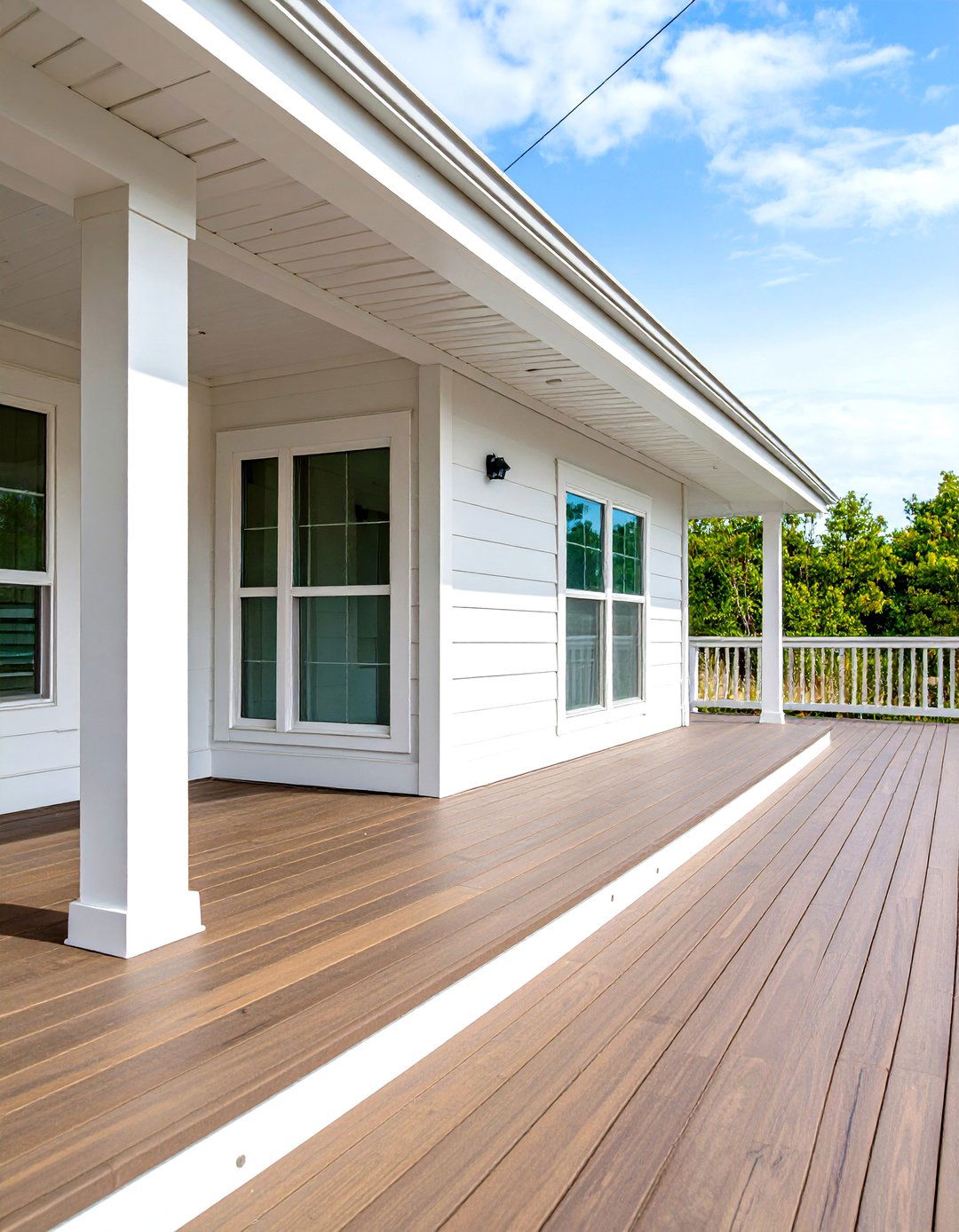
A flash of bright PVC fascia against deep-toned composite boards instantly sharpens lines and highlights the deck’s geometry. Two-tone palettes — think classic white trim framing coffee-colored planks — are trending because the UV-stable PVC keeps its crisp hue and wipes clean with a garden hose. For best results, pre-drill and use color-matched screws so the fasteners vanish into the board. Run the trim ½ inch above concrete or soil to prevent wicking, and add matching stair risers so every elevation reads as one cohesive picture frame.
2. Horizontal Cedar-Slat Deck Fascia
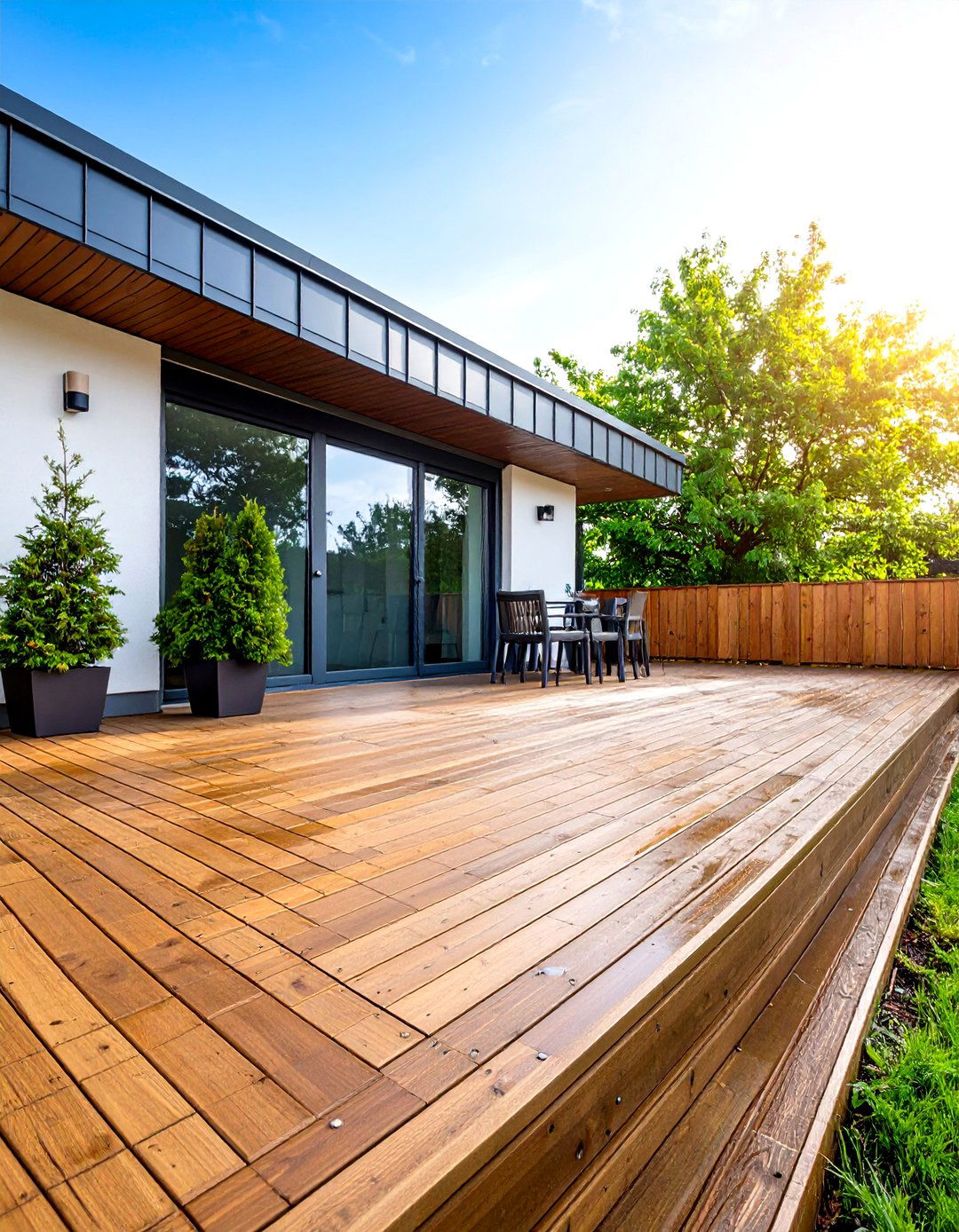
Horizontal slats lend a modern, airy feel while letting moisture escape. Tight-grained cedar resists rot naturally and accepts clear sealer for a honeyed glow that deepens with age. DIYers can rip 1×6 boards into varied widths and attach them to pressure-treated blocking for a staggered pattern that feels bespoke. Keep ¼-inch gaps between slats for ventilation and use stainless steel nails to avoid black streaks. Finish by beveling the top edge so rain sheds instead of soaking in.
3. Stone-Veneer Wrapped Deck Fascia
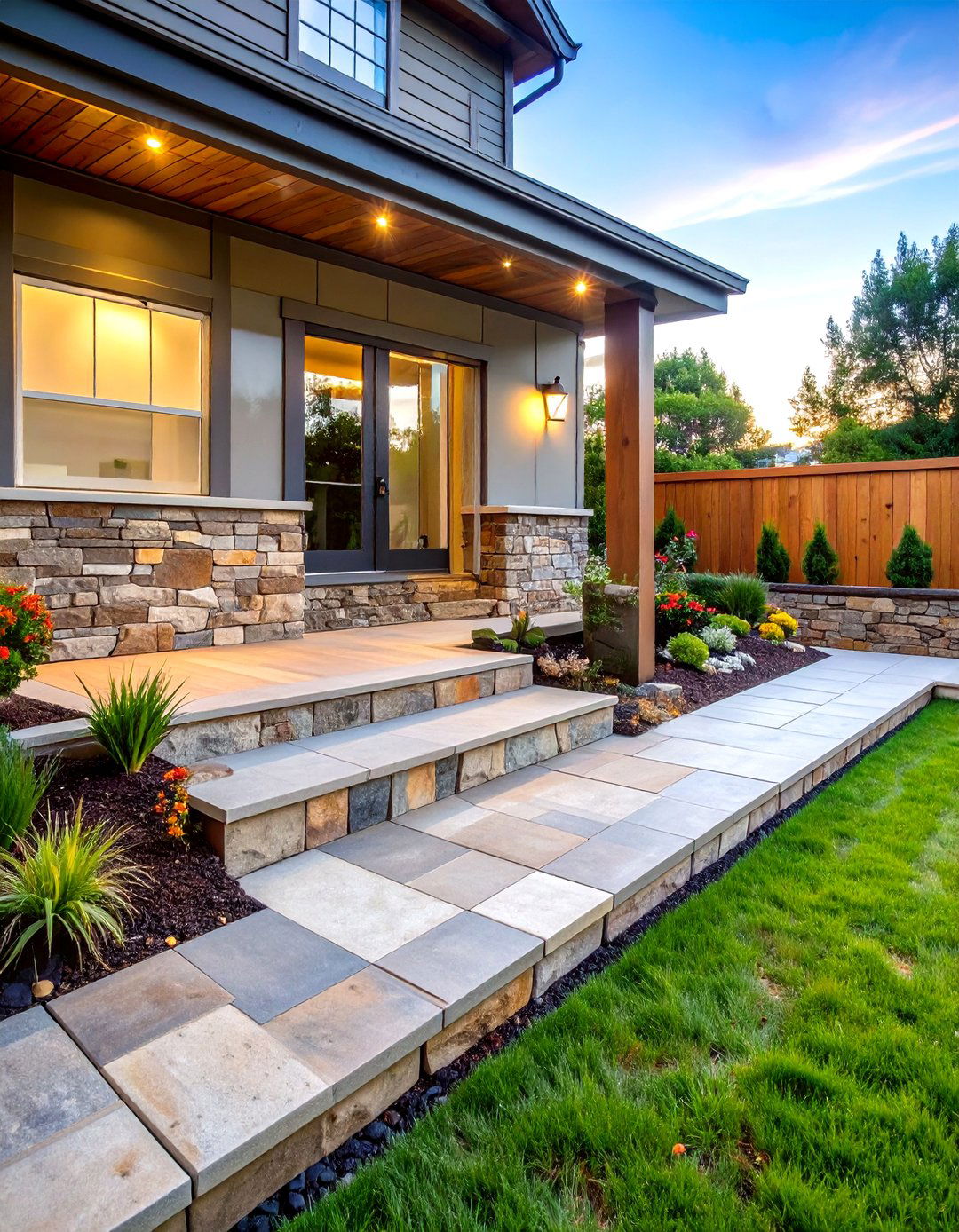
Nothing grounds a deck like a low stone skirt that echoes nearby hardscape. Lightweight faux-stone panels glue and screw to plywood backing, giving you the texture of ledgestone without the weight or masonry mess. Match the veneer color to existing retaining walls to create a seamless flow, and cap the top with a pressure-treated ledger board so the decking sits proud of the rock. A hidden access panel behind one course lets you reach hose bibs or electrical outlets when needed.
4. LED-Lit Underglow Deck Fascia
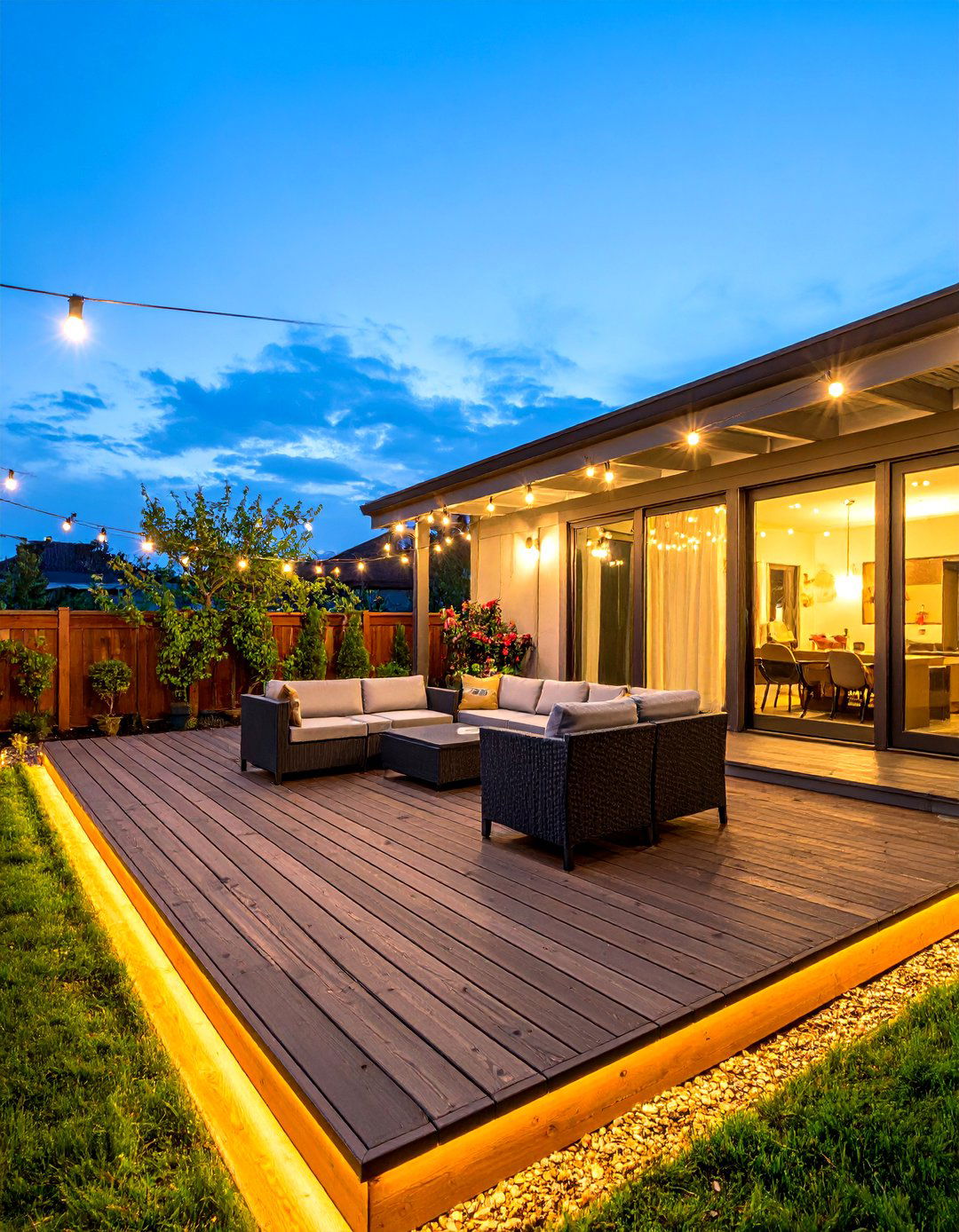
Subtle LED strips tucked beneath the fascia cast a warm halo that outlines the deck after dusk and doubles as step safety lighting. Low-voltage plug-and-play kits snap into standard 120-V outlets and sip less power than a nightlight. For a clean install, rout a ½-inch channel along the inside bottom edge, press the waterproof strip into place, and conceal the transformer behind the joists. Choose amber or soft white temperatures that flatter skin tones and don’t attract bugs.
5. Picture-Frame Accent Deck Fascia
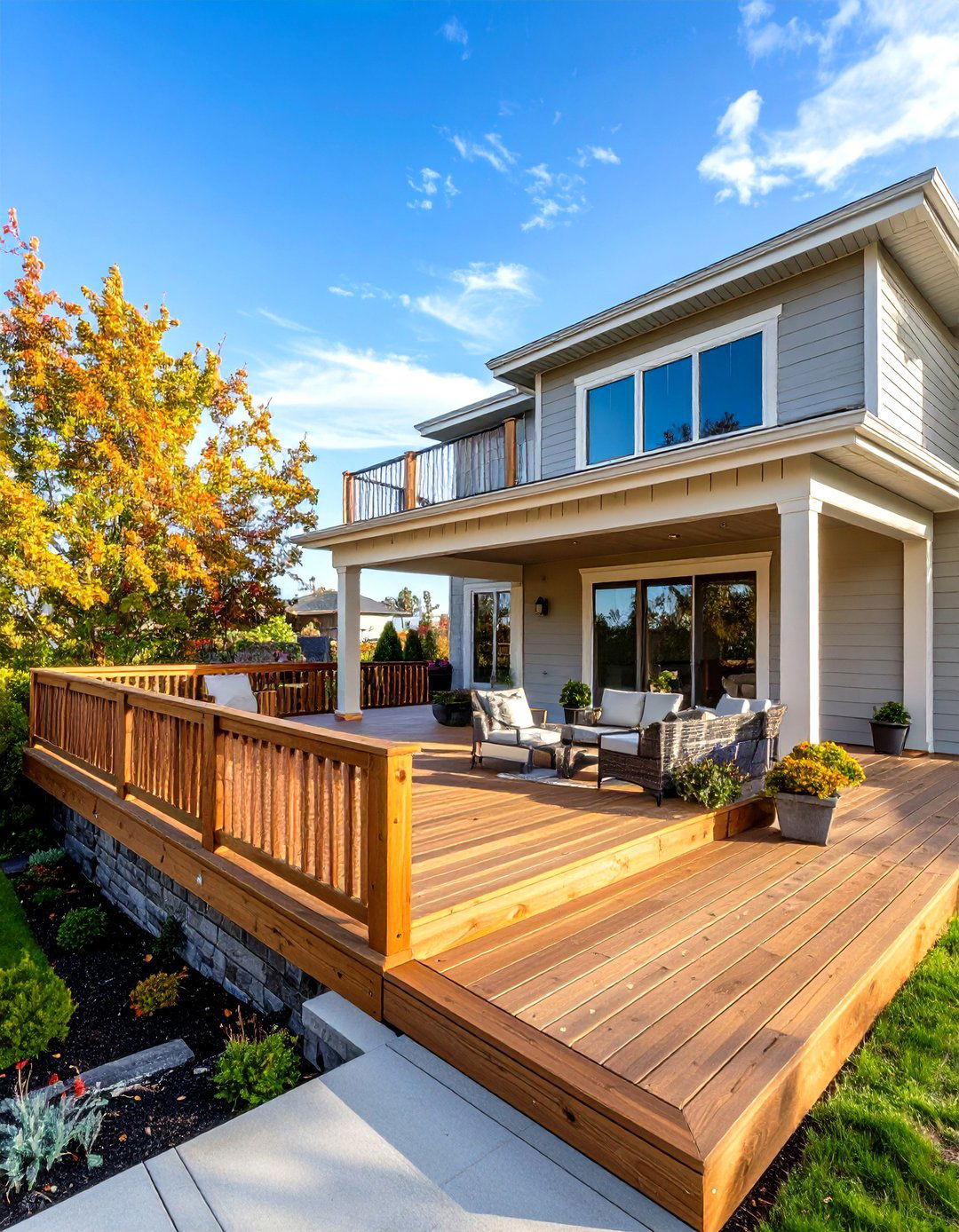
A picture-frame layout turns the outermost deck board into a showcase trim, eliminating exposed end-grain and tying stairs into one continuous band. Use miters at corners for a furniture-grade look, and back-block below each joint so screws bite into something solid. This method works equally well with composite, PVC, or tropical hardwoods; just remember to leave manufacturer-recommended expansion gaps between board ends to avoid “smile” or “scowl” joints over time.
6. Wrapped-Metal Deck Fascia for Bulletproof Edges
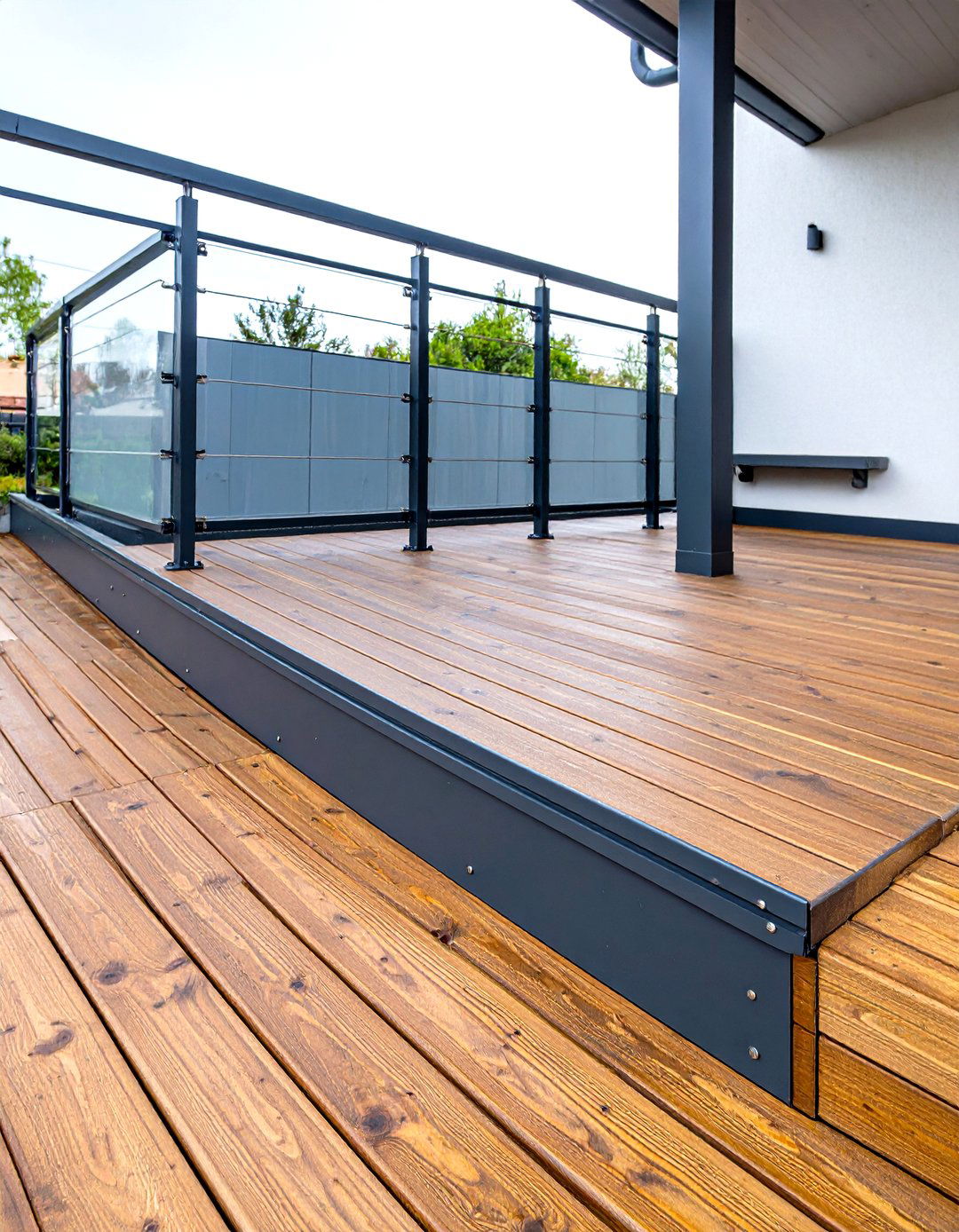
Pre-bent aluminum or steel fascia panels snap over 1× pine backing and shrug off hail, ice, and errant weed-whacker strings. Choose matte finishes to minimize oil-canning and match accent metals such as cable-rail posts. Because sharp metal edges can cut, deburr with a file and add plastic inside corners. A thin bead of adhesive behind each panel keeps wind from rattling the skin on gusty days.
7. Planter-Box Integrated Deck Fascia
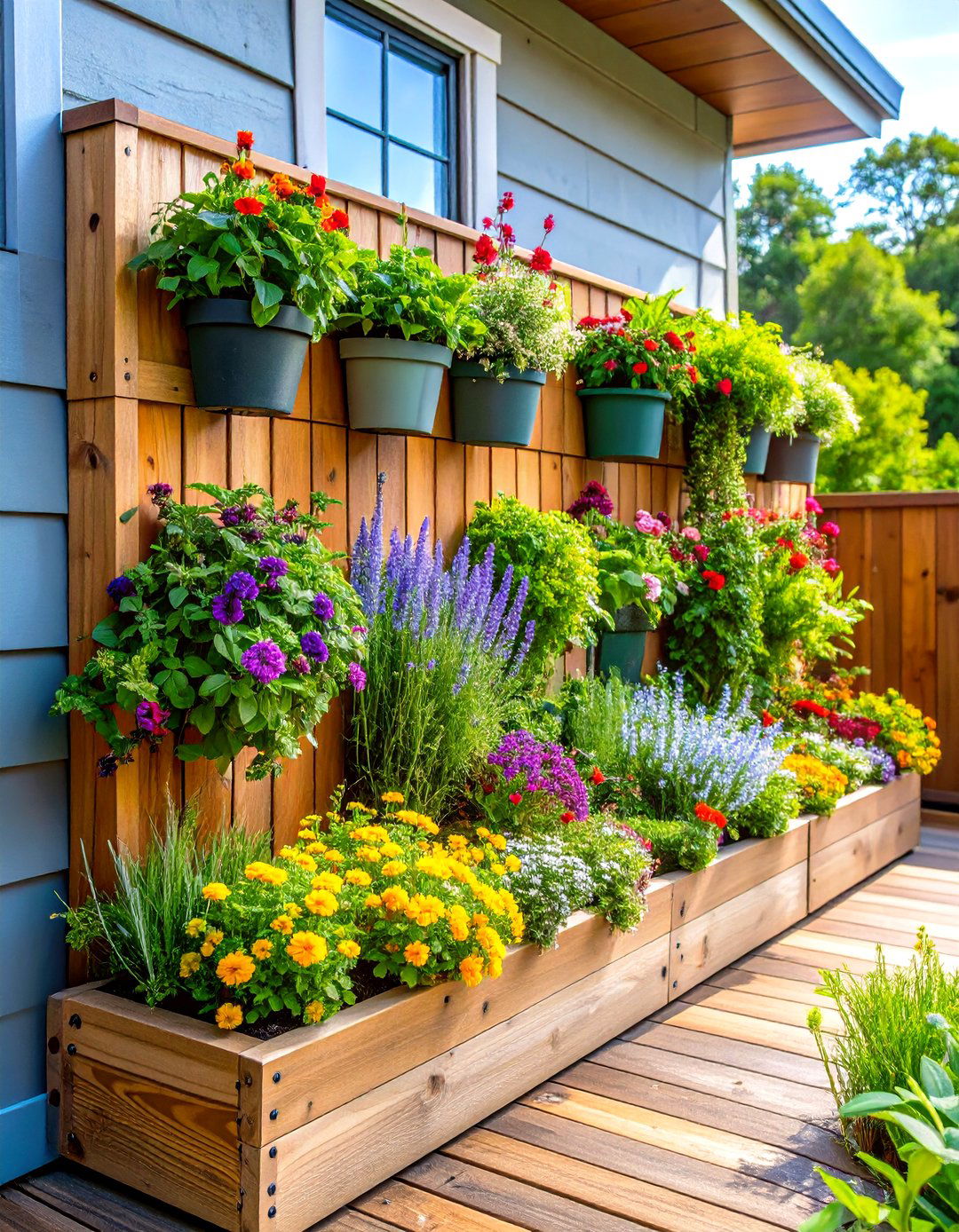
Fascia can pull double duty by cradling shallow cedar planter boxes that drop between joists. Pre-line each cavity with pond liner, staple it in place, and drill drain holes through the bottom lip so water exits freely. Built-ins feel intentional and free up deck surface for seating. Plant low-growing herbs or trailing annuals to soften hard edges and perfume the evening air.
8. Hidden-Storage Deck Fascia Panels
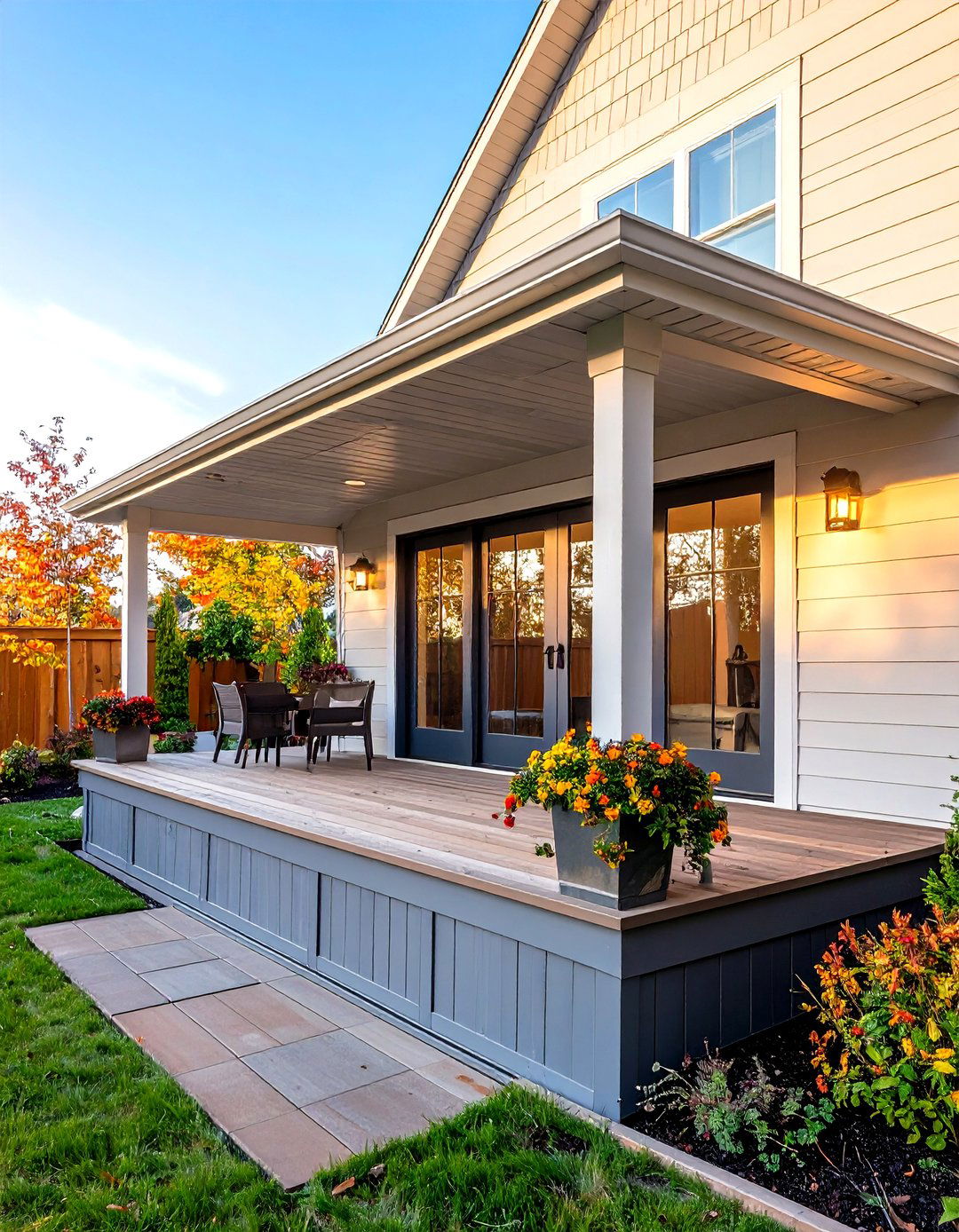
If your deck rises more than three feet, turn wasted space into lockable storage by sheathing the fascia with hinged, solid-board doors hung on outdoor-rated piano hinges. Tight seams keep the stash out of sight, while magnetic catches eliminate visible hardware. Run a continuous drip cap above the doors to divert runoff and vent the back with screened soffit strips so humidity won’t turn the cubby musty.
9. Mixed-Material Mosaic Deck Fascia
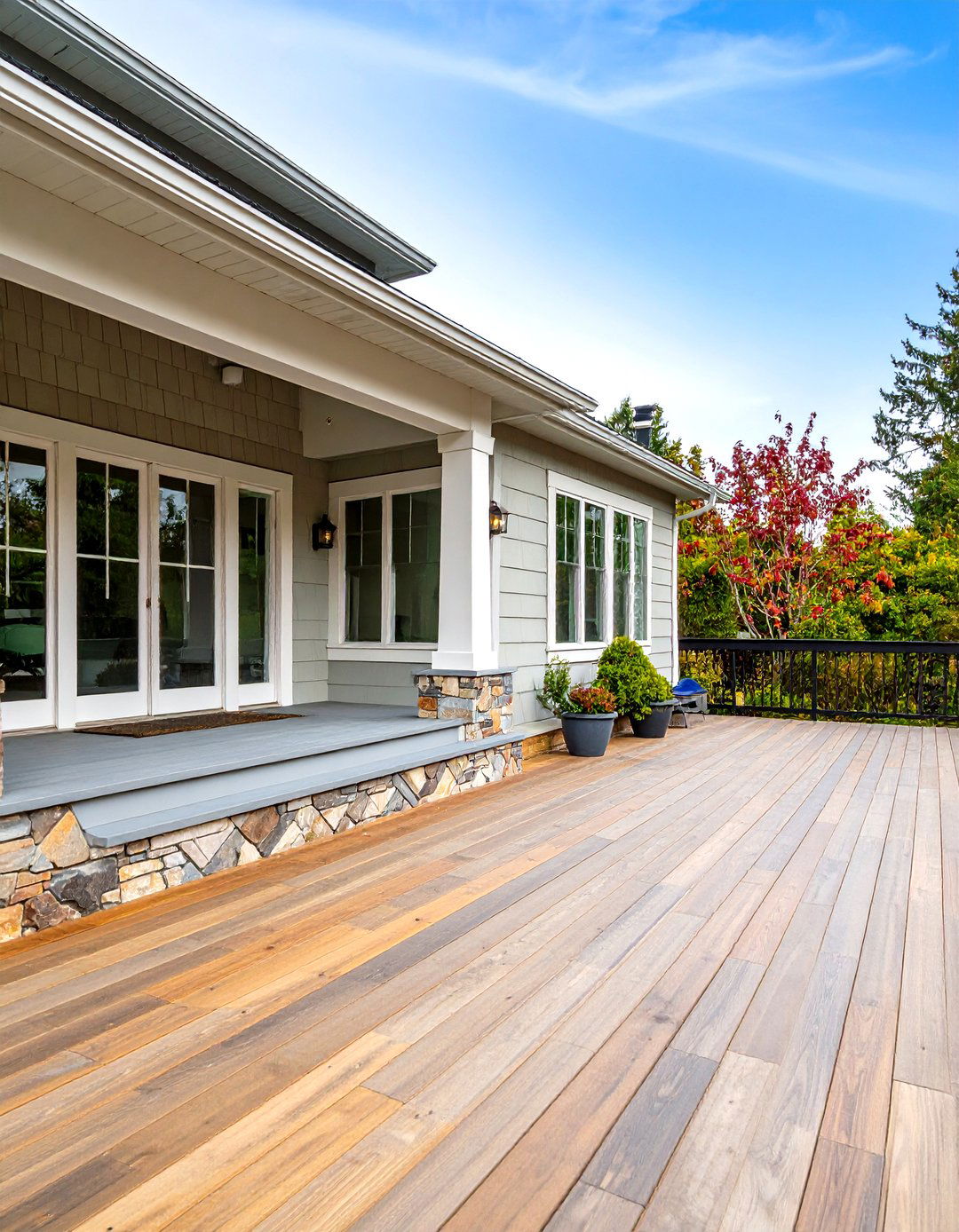
Show off artisan style by laying random-width off-cuts — think composite, cedar, and painted pine — in a checkerboard or herringbone across the fascia field. Bold color experimentation is in vogue, and this approach lets you test accents in small doses without repainting the whole deck. Seal every board face before assembly, and coat cut edges with matching touch-up paint to deter moisture intrusion.
10. Reclaimed-Wood Deck Fascia Charm
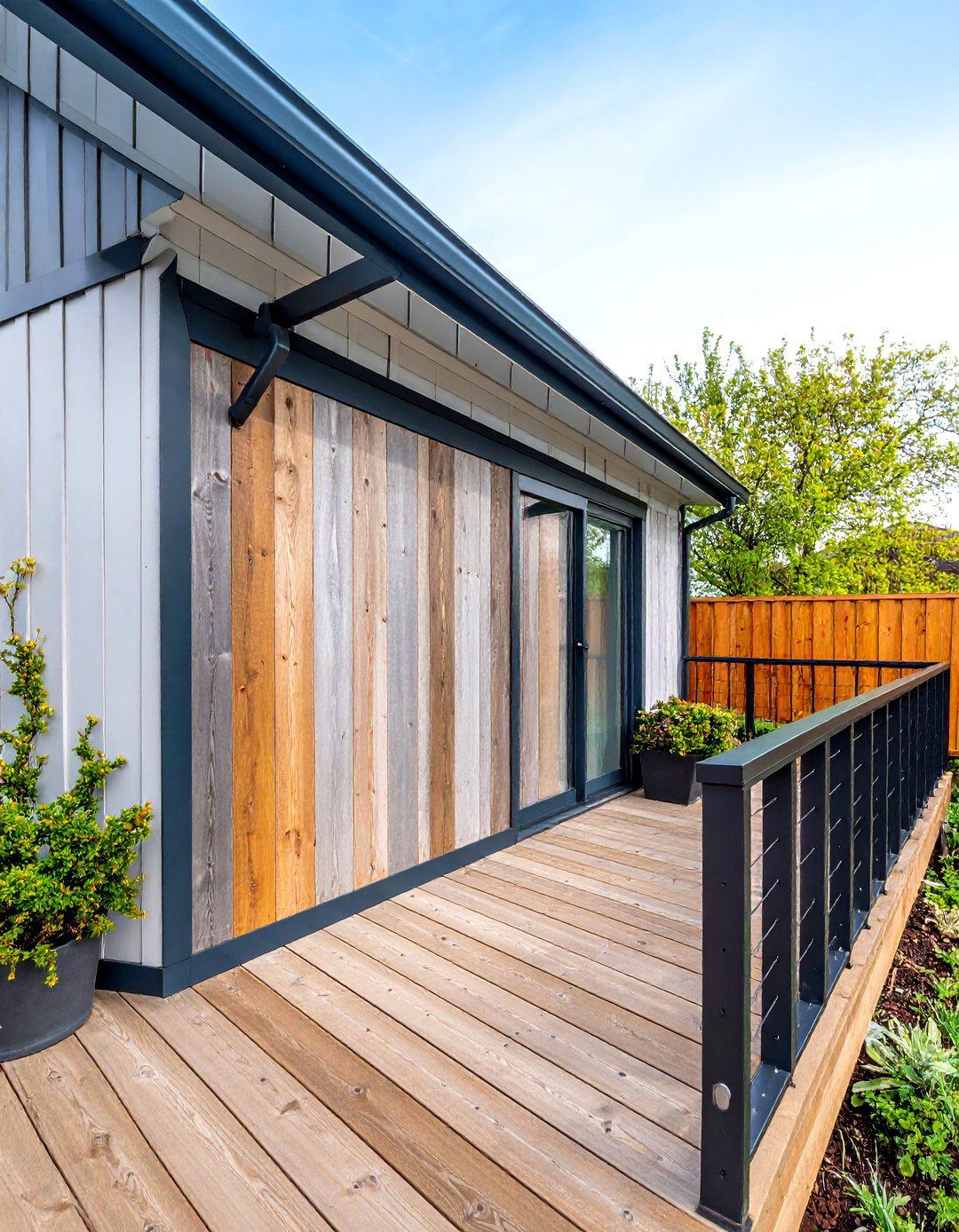
Weathered barn siding or shipping-pallet planks give instant character. Clean with a stiff brush, treat for pests, and finish with UV-blocking oil to slow further patina. The gray-brown tones pair beautifully with modern black railings, a combination cited as a 2025 outdoor trend. Because reclaimed stock varies in thickness, shim behind thinner pieces so the finished plane stays flush and nails don’t telegraph.
11. Vent-Friendly Slotted Deck Fascia
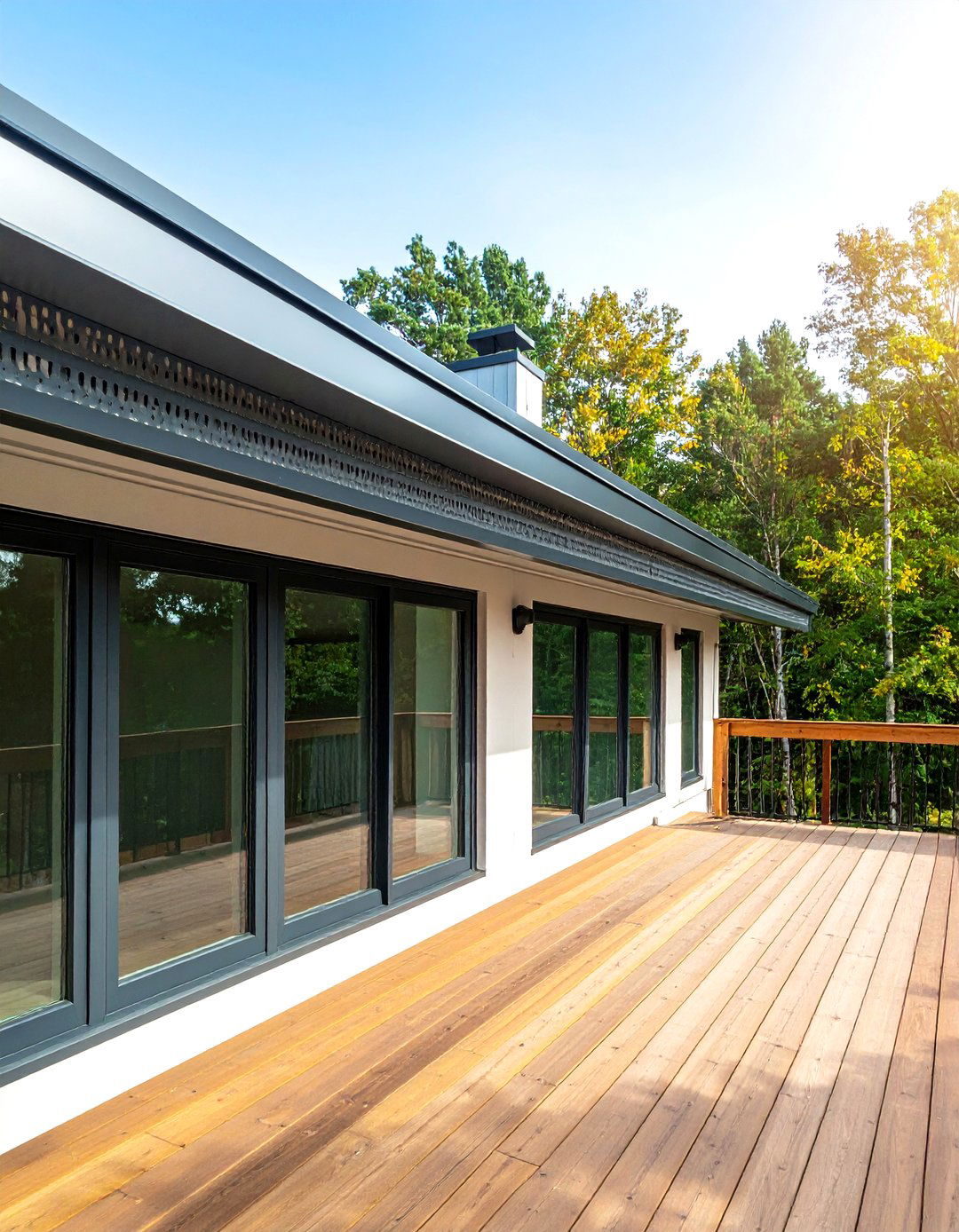
Where airflow is critical — especially on high-moisture sites — install perforated aluminum strips or create 1-inch slot details between composite panels. Purpose-built vented fascia products maintain a continuous look while quietly exchanging air under the deck, preventing mold and ice dams. Keep screening on the inside face to block critters but still allow 50 percent open area for ventilation.
12. Flush-Mount Composite Deck Fascia
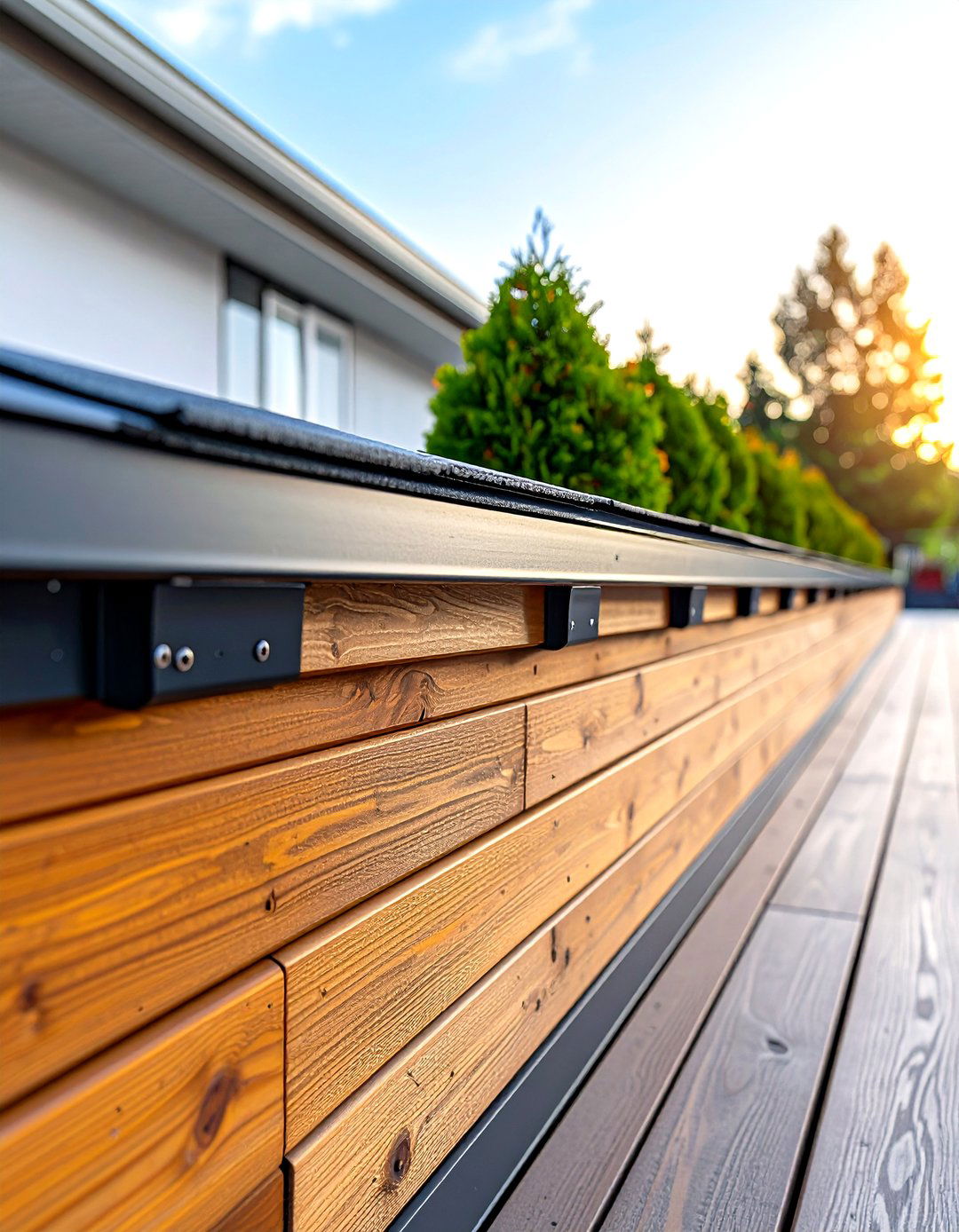
Composite fascia boards now match decking colors perfectly and install with hidden TOPLoc™ screws that sit just below the surface and blend away. By aligning fascia and deck boards flush, crumbs can’t get trapped, and the seamless edge invites barefoot lounging. Add a bevel on the bottom edge to reduce scuff marks from lawn equipment.
13. Graceful Curved Deck Fascia
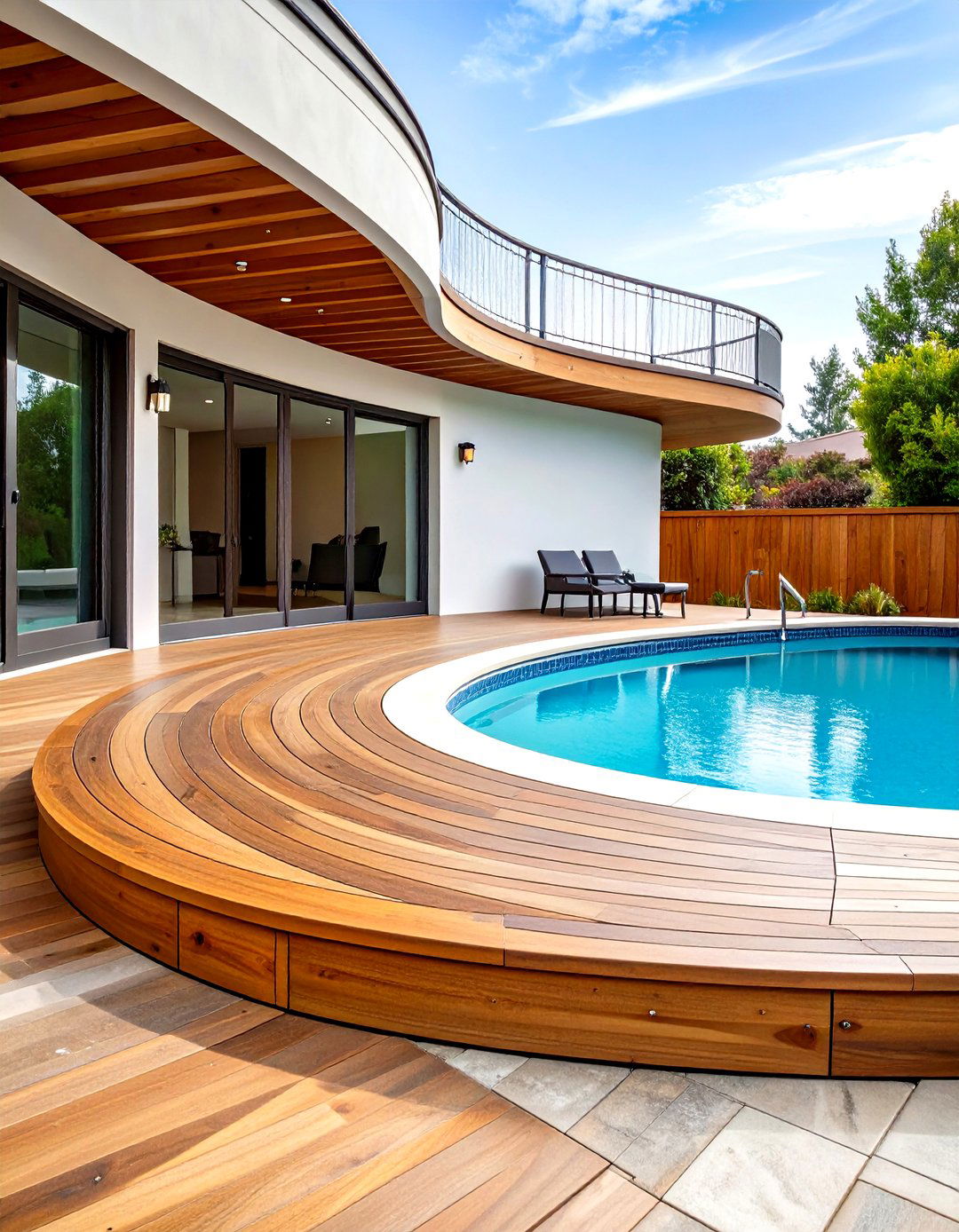
Heat-bend PVC or kerf-cut composite boards to snake around circular decks or bump-outs, turning potential eyesores into sculpture. Contractors note that curved fascia pairs especially well with sweeping bar-top rails spotlighted in current design showcases. Secure the curve with plenty of stainless screws and use short, staggered kerfs on the back to keep the face free of visible cuts.
14. Eco-Smart Recycled-Content Deck Fascia
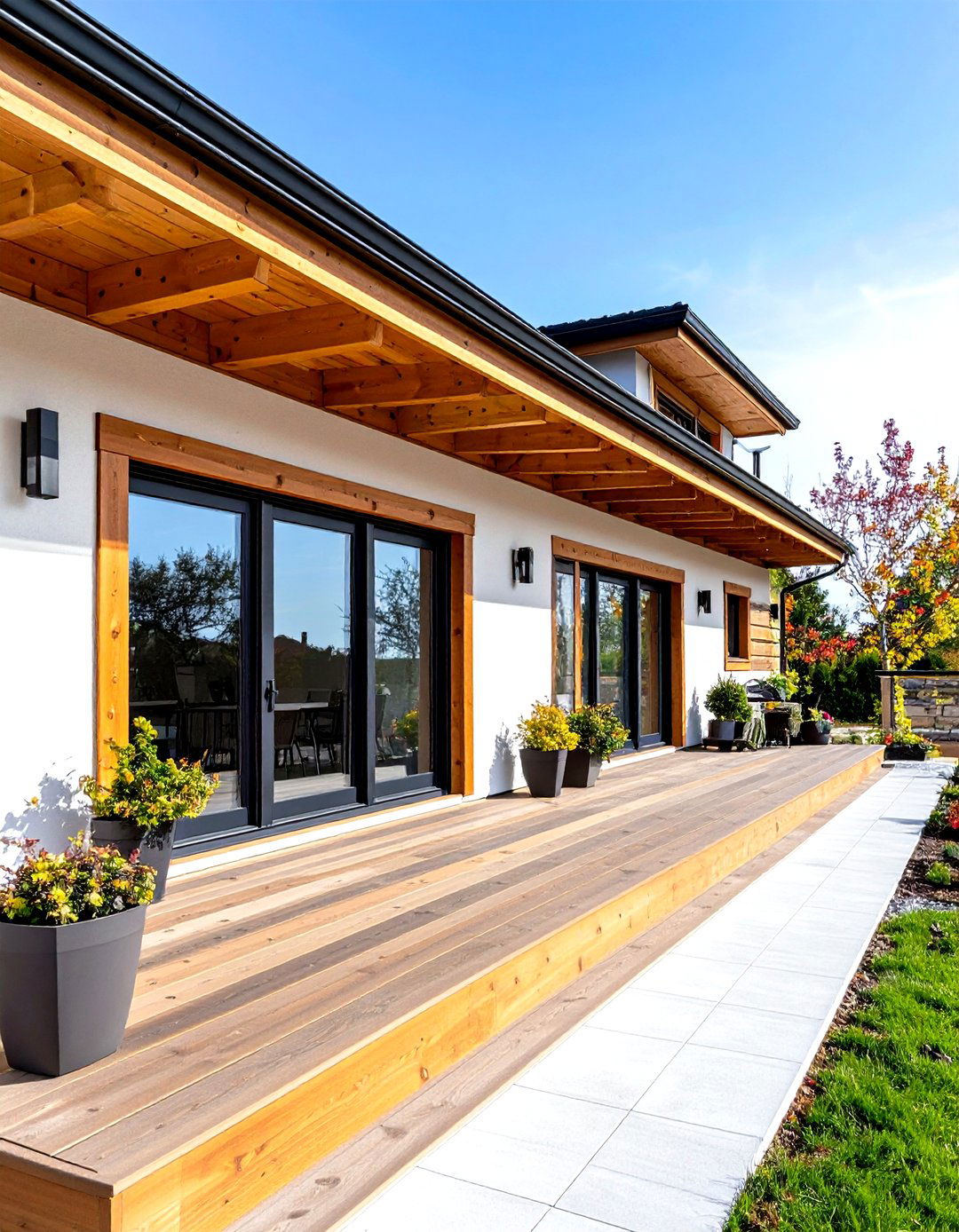
Choosing fascia made from recycled milk jugs or sawdust diverts waste from landfills while delivering 25-plus-year warranties against fading and rot. Modern composites demand only seasonal soap-and-water cleaning — no harsh chemicals required. For the greenest install, use stainless clips that can be removed and reused if a board ever needs swapping.
15. Bold-Color Painted Deck Fascia
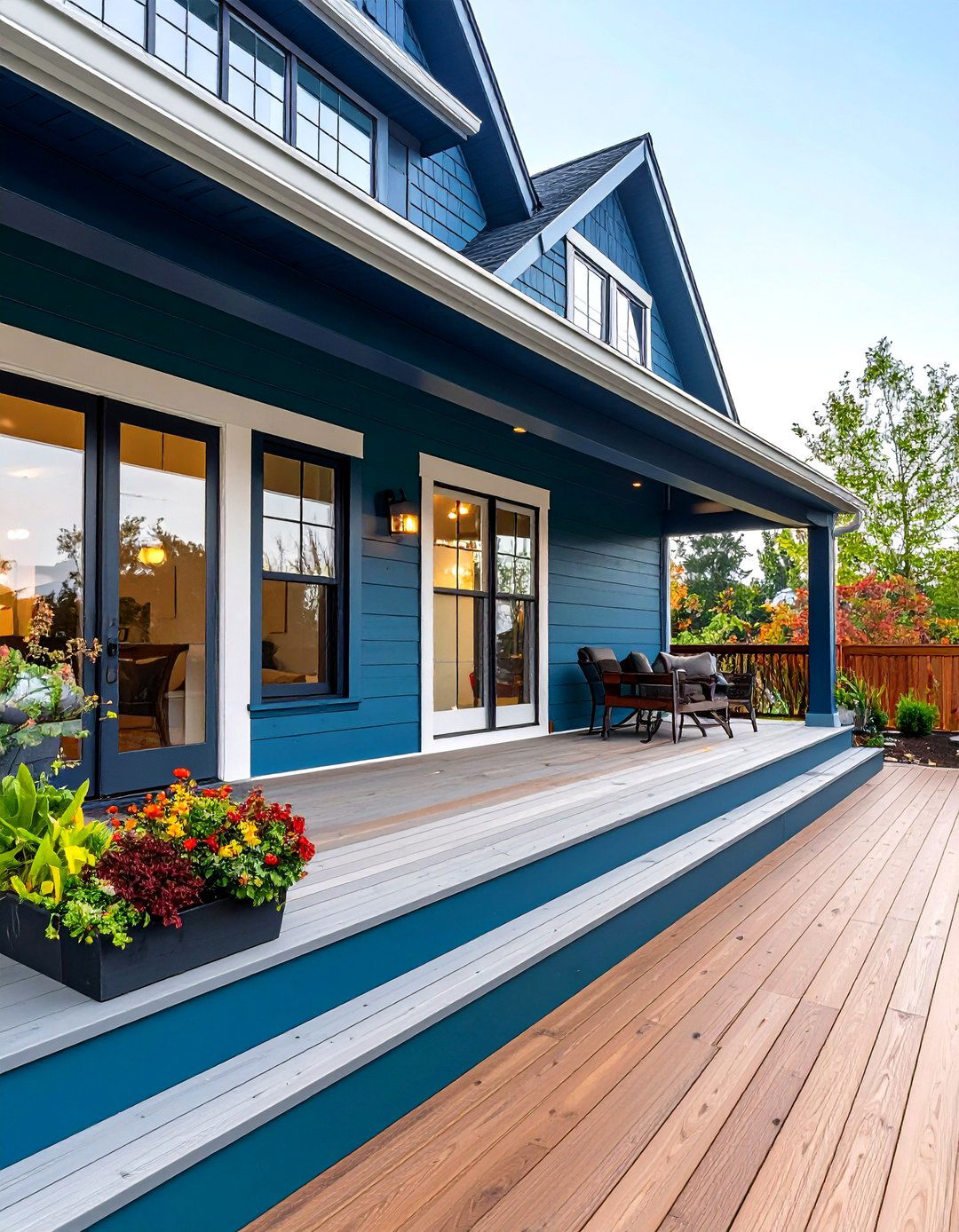
Deep navy, forest green, and earthy reds are sweeping outdoor palettes in 2025. A painted fascia lets you test adventurous hues on a manageable surface area and update easily next season. Choose high-quality exterior enamel, prime first, and back-brush into end-grain to lock out moisture.
16. Louvered Deck Fascia for Airflow
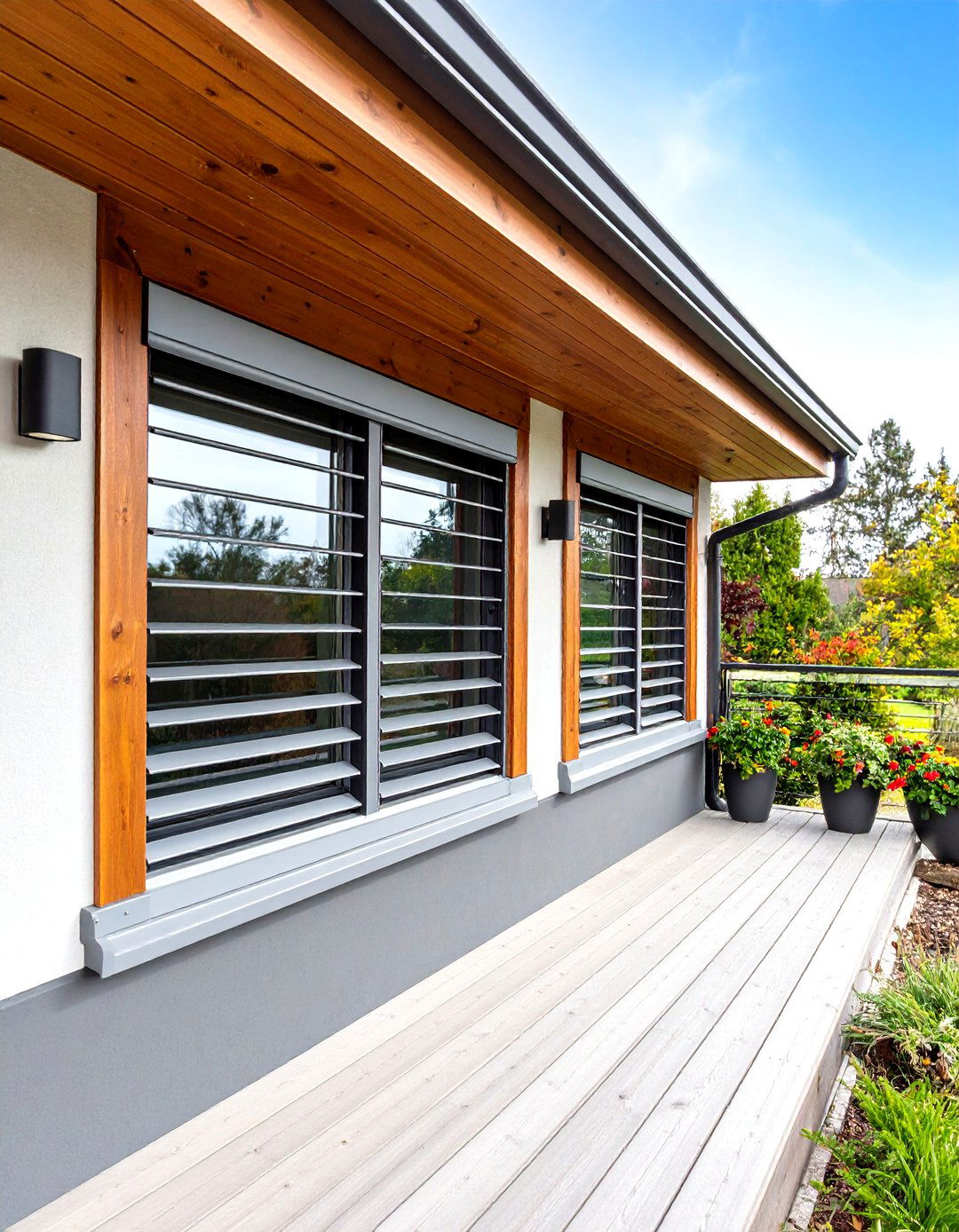
Angled louvers installed like miniature shutters protect under-deck storage while boosting ventilation. Factory-made aluminum kits come pre-finished and include insect screen. When assembling wood louvers, set the blades at 15 degrees and coat all sides before nailing to prevent cupping.
17. Perforated-Metal Deck Fascia Screens
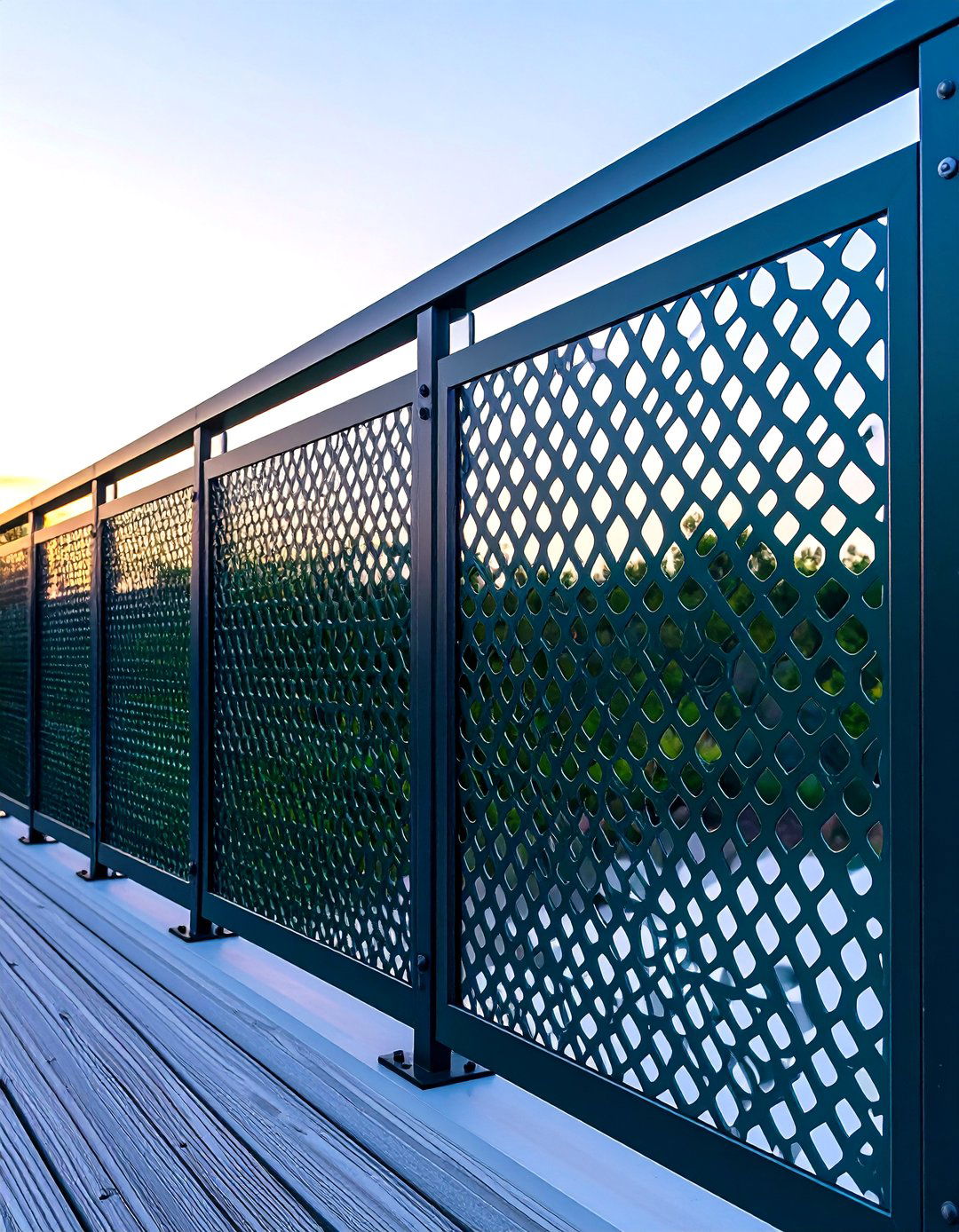
Laser-cut steel or aluminum panels with geometric perforations create dramatic shadow patterns by day and lantern-like glows at night when back-lit. Durable powder-coat finishes shrug off rust and echo metal-wrapped fascia trends. Attach panels with color-matched self-tapping screws and add neoprene washers to stop galvanic reactions between dissimilar metals.
18. Living-Wall Deck Fascia

Turn your deck perimeter into a vertical garden by attaching pocket-style planter fabric or wire grids to the fascia and filling with herbs, succulents, or annual blooms. Designers recommend integrating greenery to soften hardscapes and tie outdoor rooms to the landscape. Install drip-irrigation tubing along the top row so watering stays effortless.
19. Diagonal-Plank Picture-Frame Deck Fascia
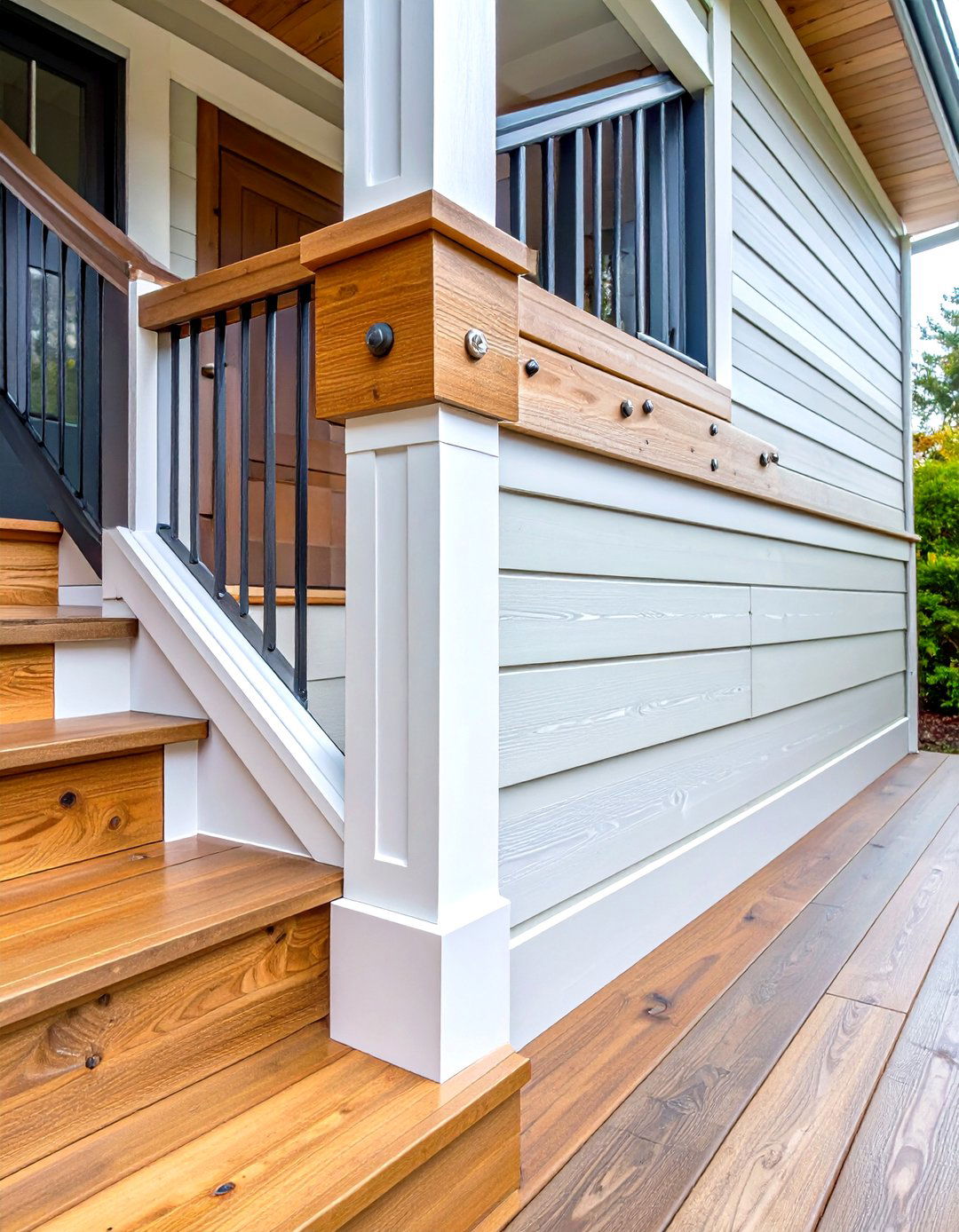
Rotate picture-frame boards 45 degrees for energy and movement along stair rises or curved edges. The idea riffs on classic picture-framing but adds modern twist and improved end-grain concealment. Use contrasting fastener plugs for a subtle dotted-line accent, or hide screws entirely with biscuit joints and exterior glue.
20. Board-and-Batten Deck Fascia Style
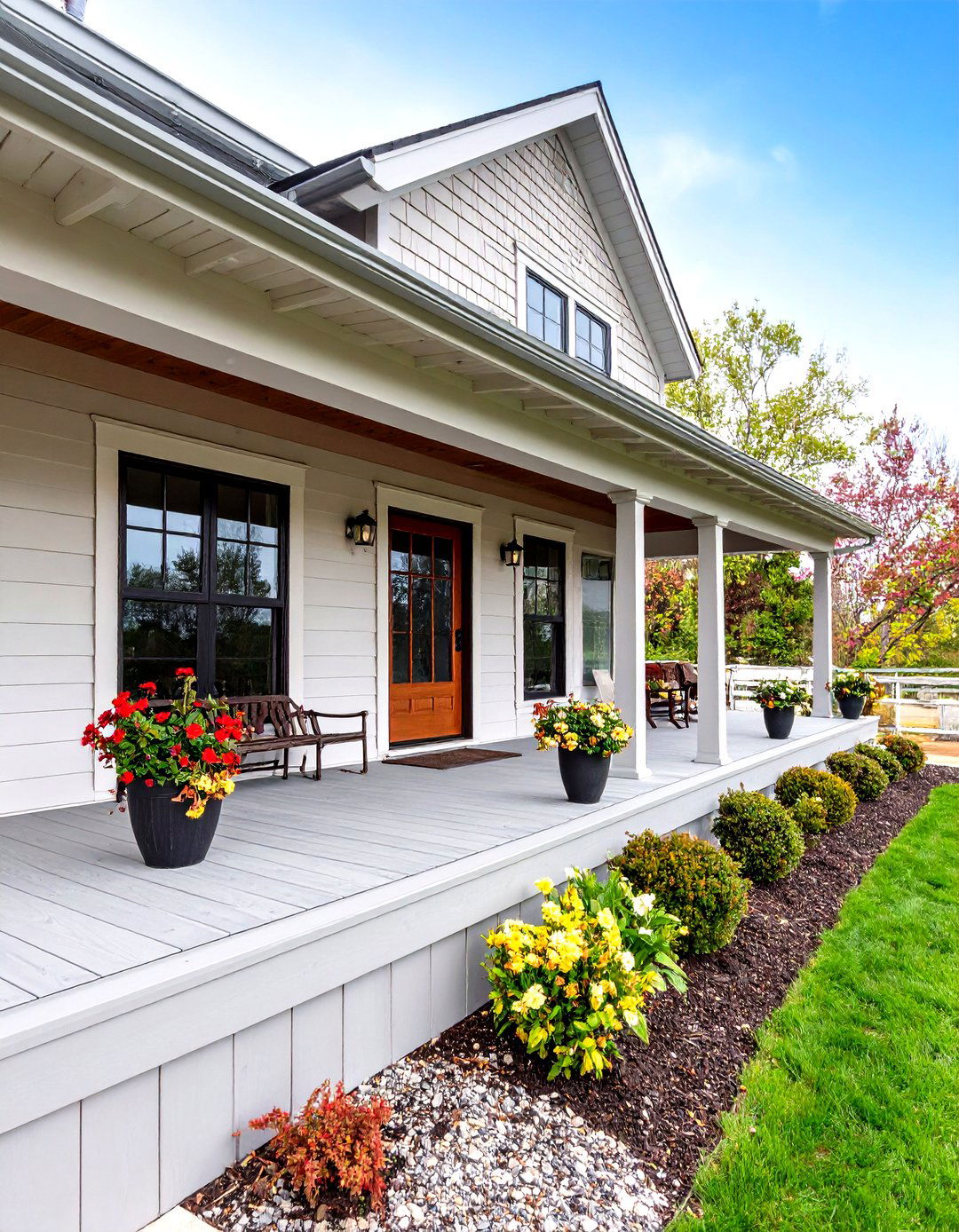
Vertical battens over wide fascia planks mimic farmhouse siding and disguise gaps on tall deck skirts. This technique, highlighted in skirting round-ups, also stiffens thin panels against wind flex. Prime and paint all pieces before assembly so shrinkage won’t reveal bare wood later.
21. Layered Shadow-Line Deck Fascia

Stack two fascia boards — one recessed ¾ inch behind the other — to create a subtle reveal that reads like architectural shadow-lines on modern façades. Using a lighter inner board and darker outer board echoes popular high-contrast schemes for decks. Mount the backer first, shim it dead-plumb, then overlay the face board with hidden Cortex® plugs for a nail-free look.
22. Weathered-Shiplap Deck Fascia

Horizontal shiplap boards with eased edges lock together tightly, shedding water and giving nautical charm. Better Homes & Gardens notes shiplap’s durability and easy staining across outdoor surfaces. Leave a ⅛-inch expansion gap between courses and seal cut ends with exterior primer to prevent moisture wicking.
23. Faux-Brick Panel Deck Fascia
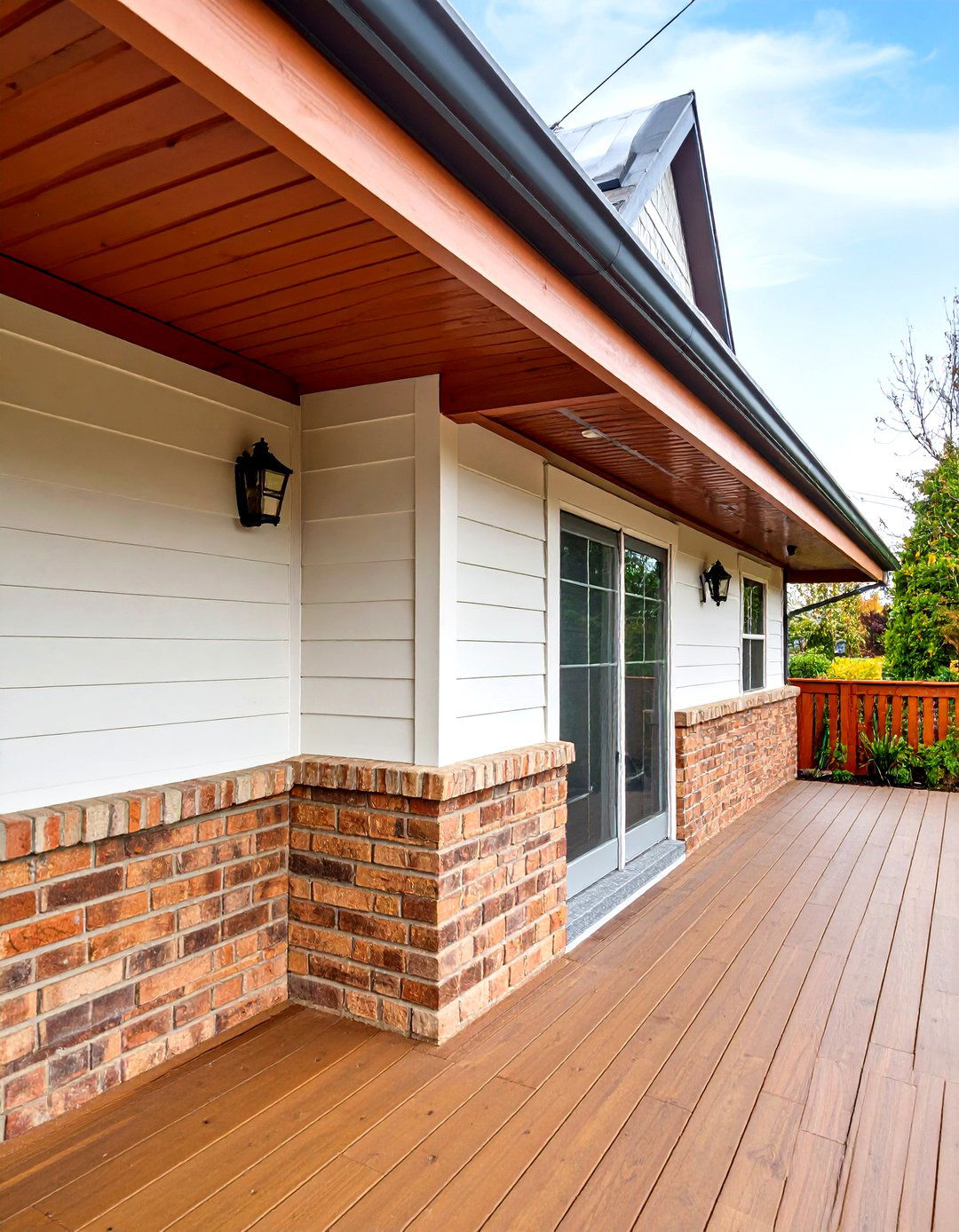
UV-stable polyurethane brick panels install with construction adhesive and hidden screws, delivering old-world texture in a weekend. Stone or brick skirting is a favorite for hiding under-deck storage while boosting visual weight. Paint the mortar lines a lighter tone for depth and run an L-shaped flashing at grade to deflect splash-back.
24. Glass-Insert Deck Fascia Accents
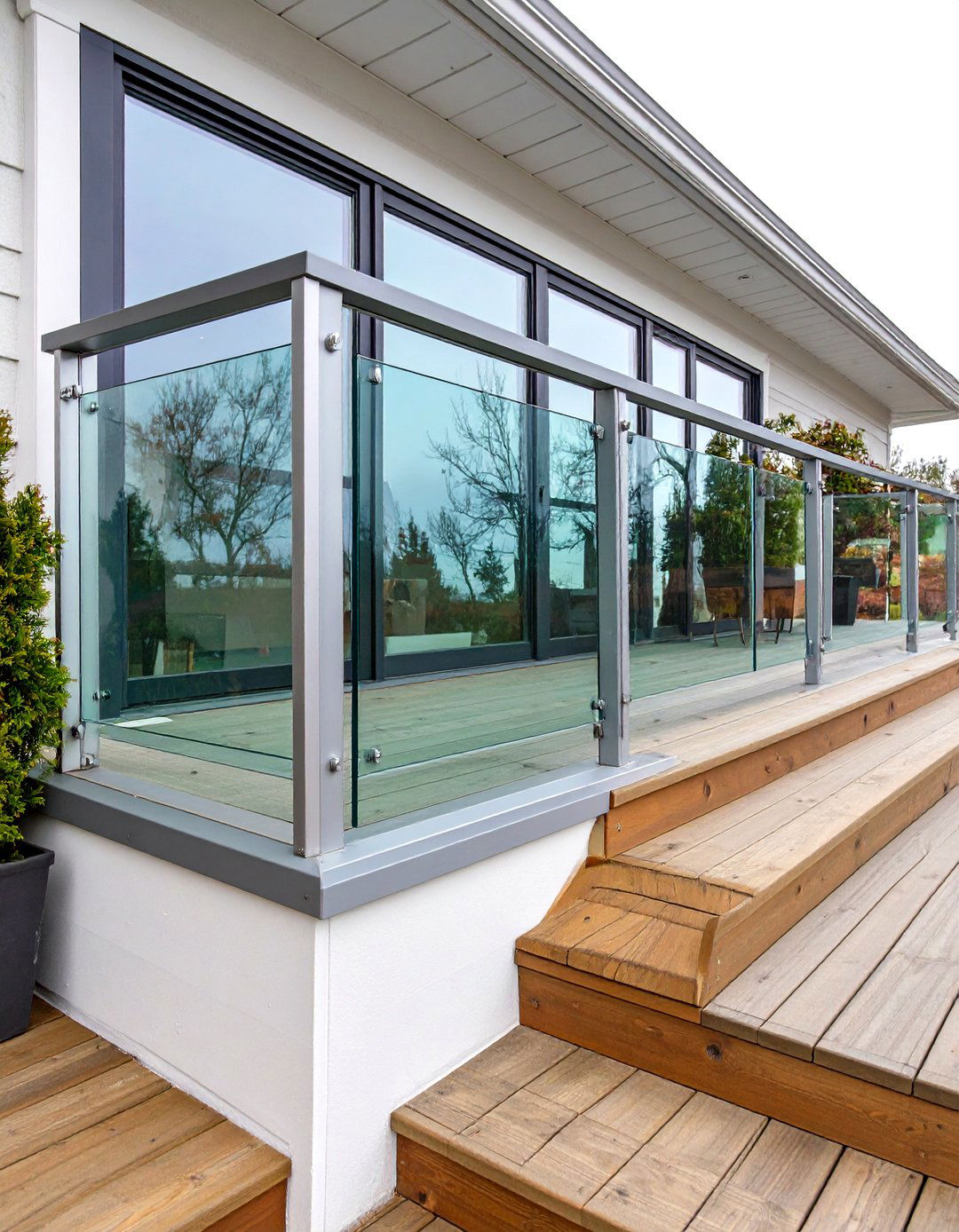
Swap a centered section of solid fascia for tempered-glass panels to reflect landscaping and lighten heavy stair runs. Designers love pairing clear inserts with neutral deck colors for timeless exteriors. Frost the glass on high-traffic sides for privacy, and secure panels in aluminum channels bolted to blocking so they can flex with seasonal movement.
25. Hand-Painted Mural Deck Fascia
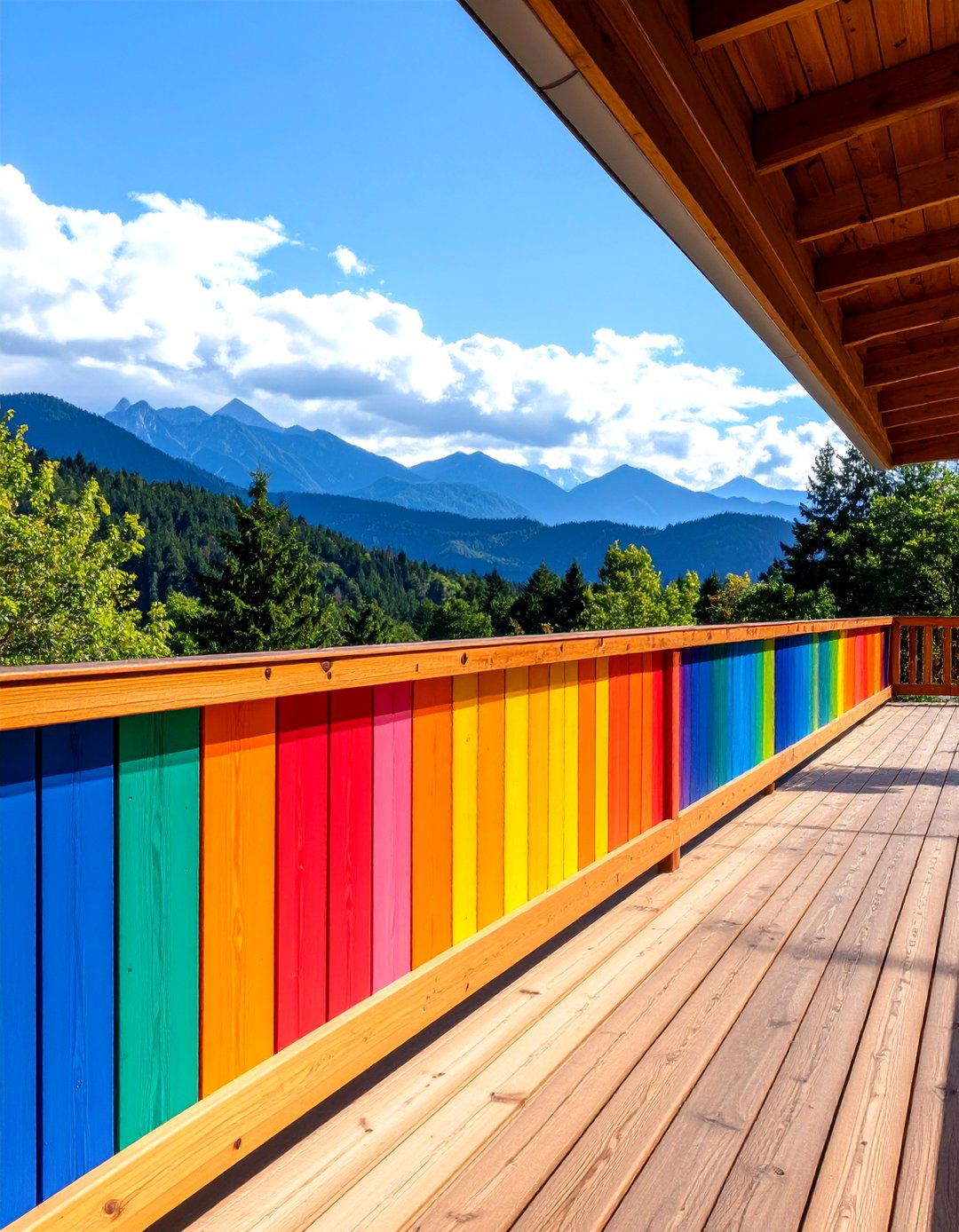
Finally, treat your fascia as canvas. A weatherproof outdoor mural — abstract waves, mountain silhouettes, or family monograms — adds personality without permanent commitment; scuff-sand and repaint whenever inspiration strikes. Trends toward expressive, colorful outdoor living spaces make artistic fascia a conversation starter. Seal finished art with clear marine varnish for longevity, and keep touch-up paint on hand for quick fixes.
Conclusion:
From minimalist PVC picture frames to stone-wrapped skirting and LED-lit showpieces, deck fascia has become one of the most versatile tools for elevating outdoor architecture. Experimenting with color, texture, airflow, and integrated features lets you protect framing, hide storage, and broadcast personal style in equal measure. Install with proper fasteners, maintain ventilation, and choose materials suited to your climate, and your fascia will age as gracefully as the memories made on the boards above it.



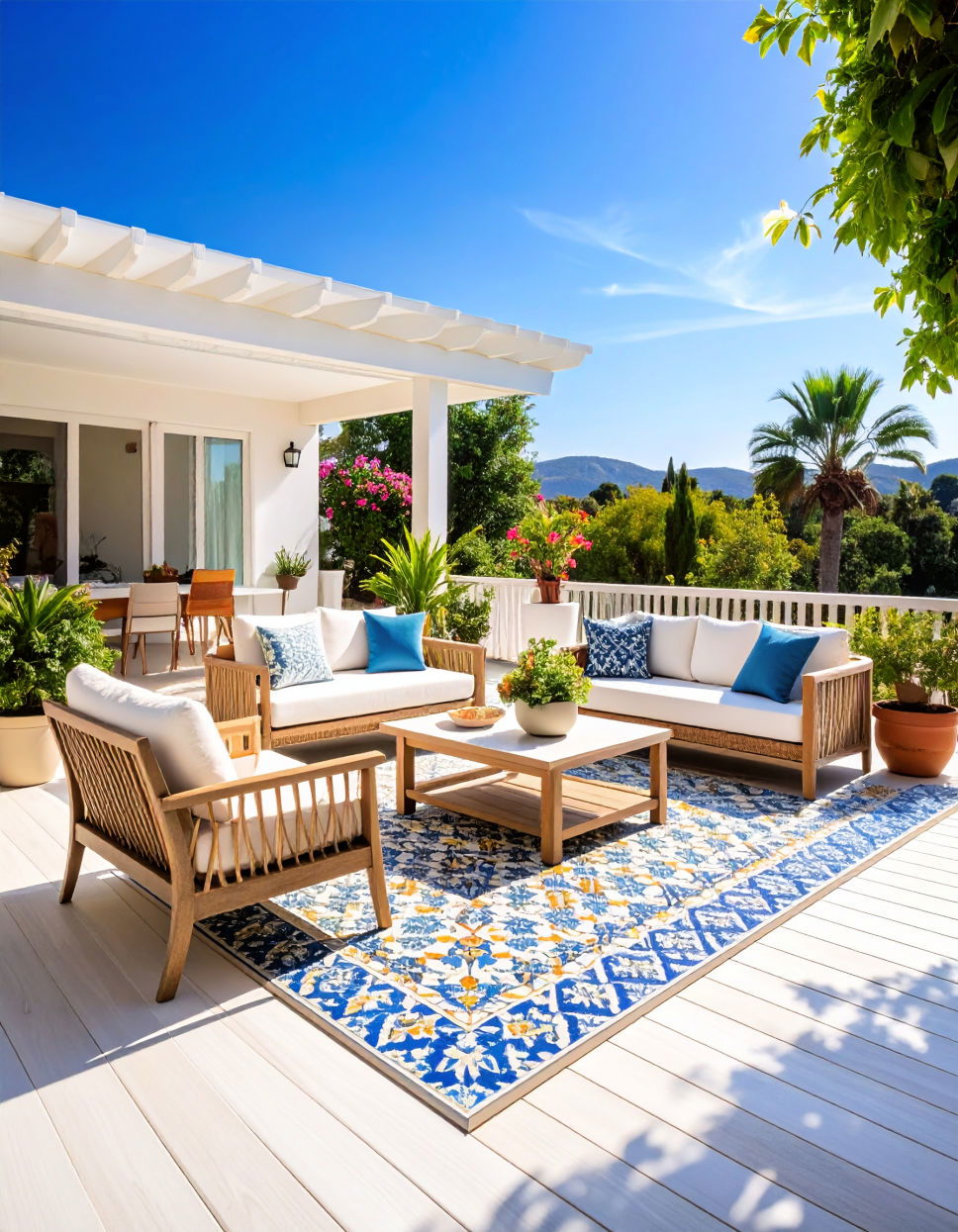
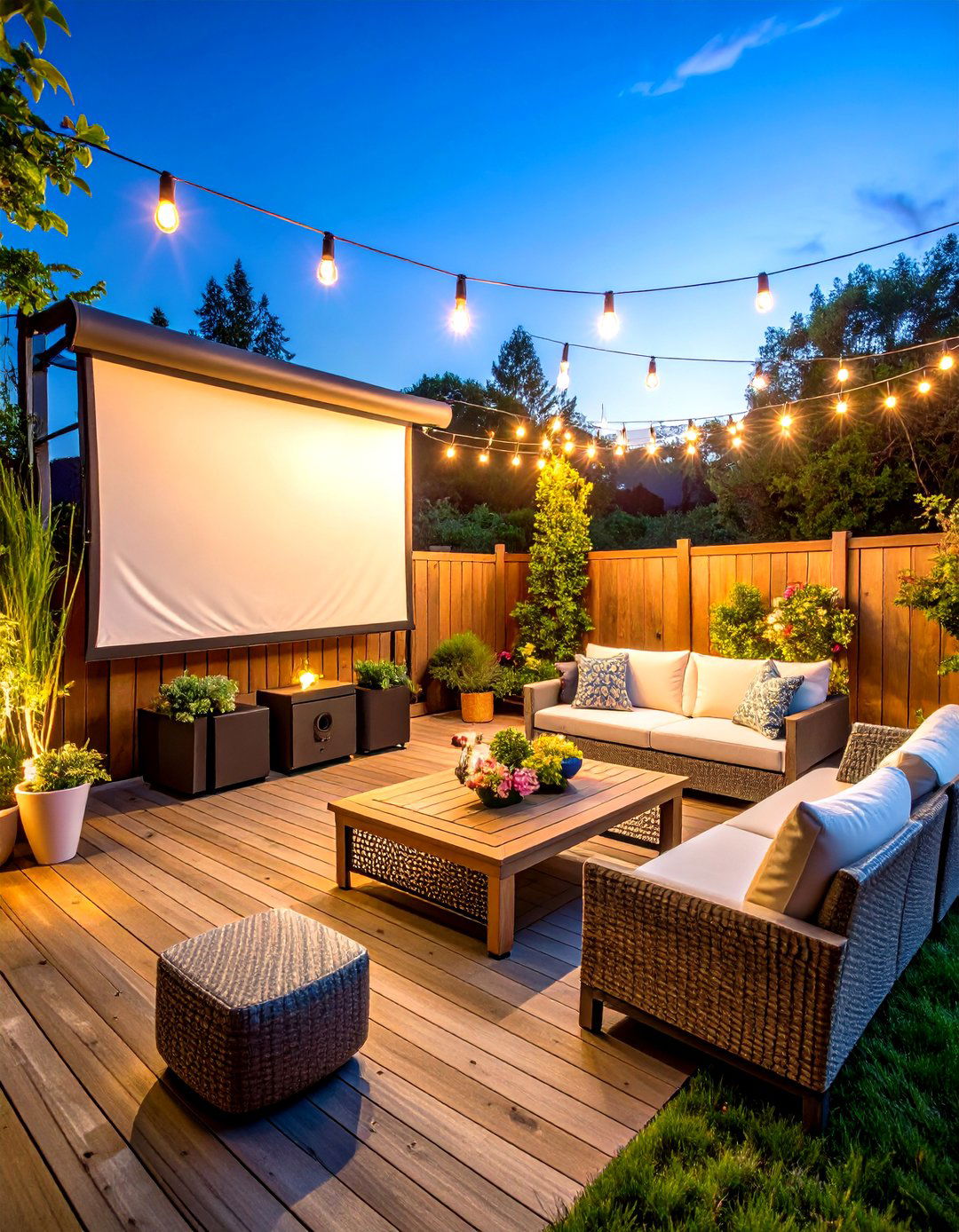
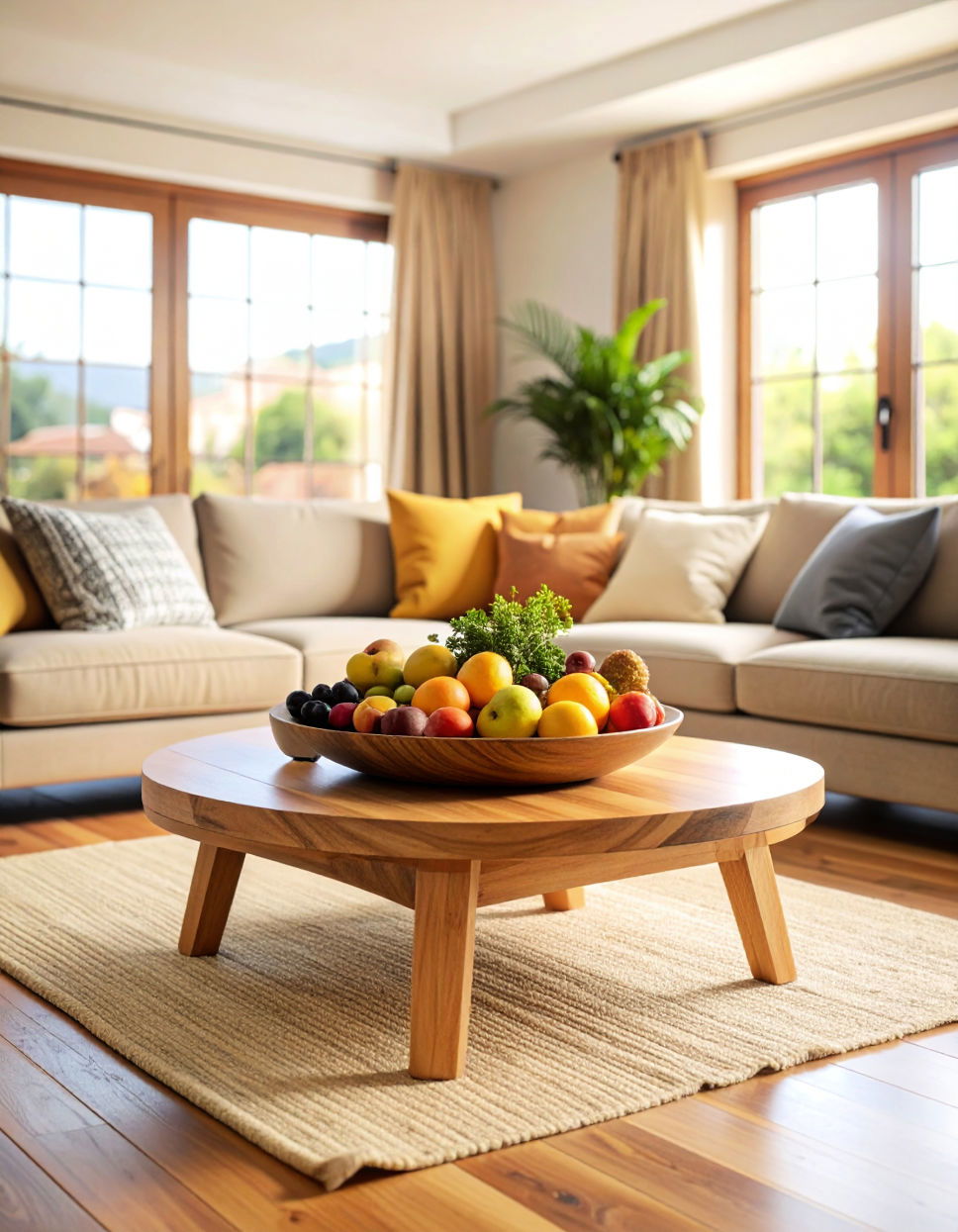
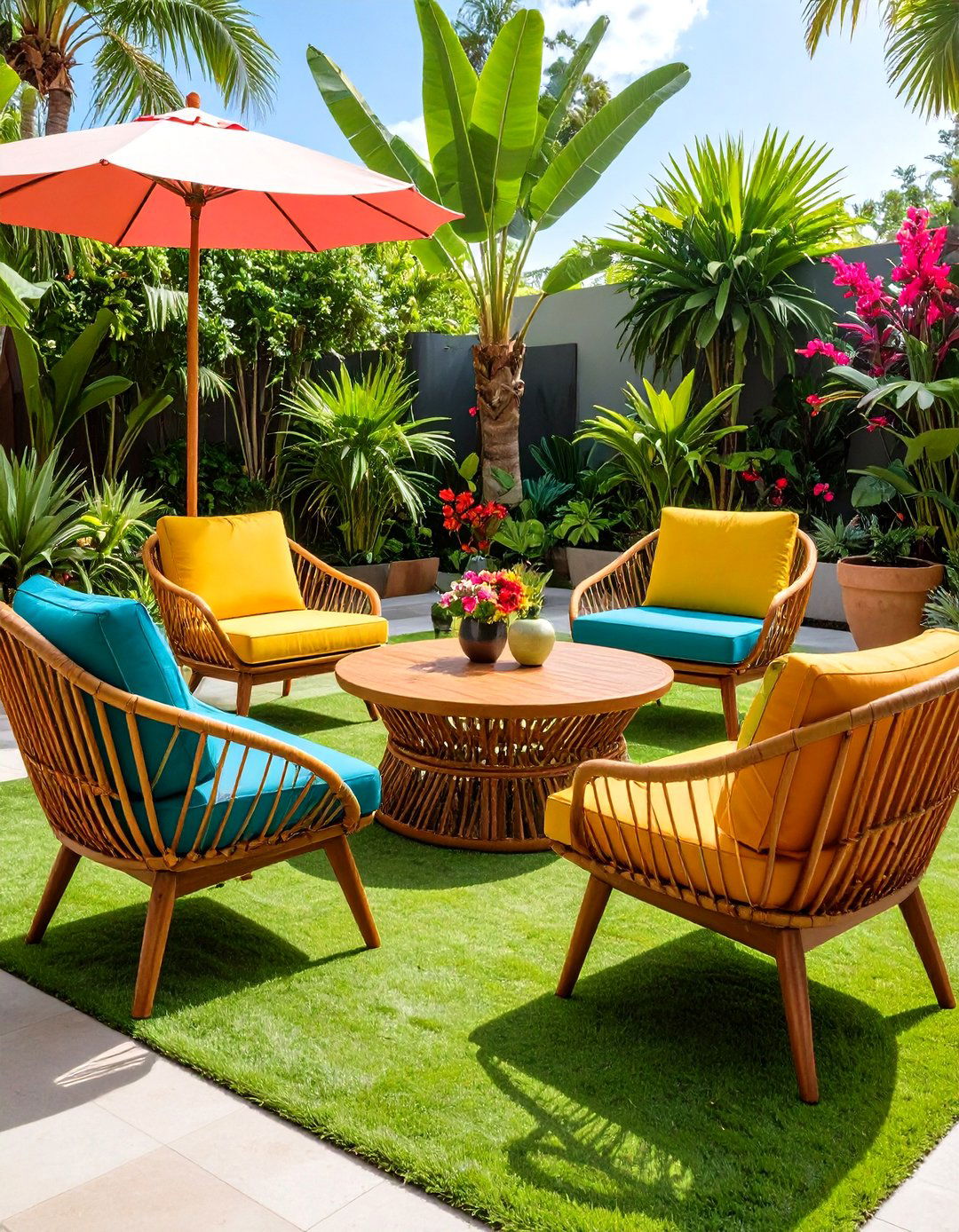
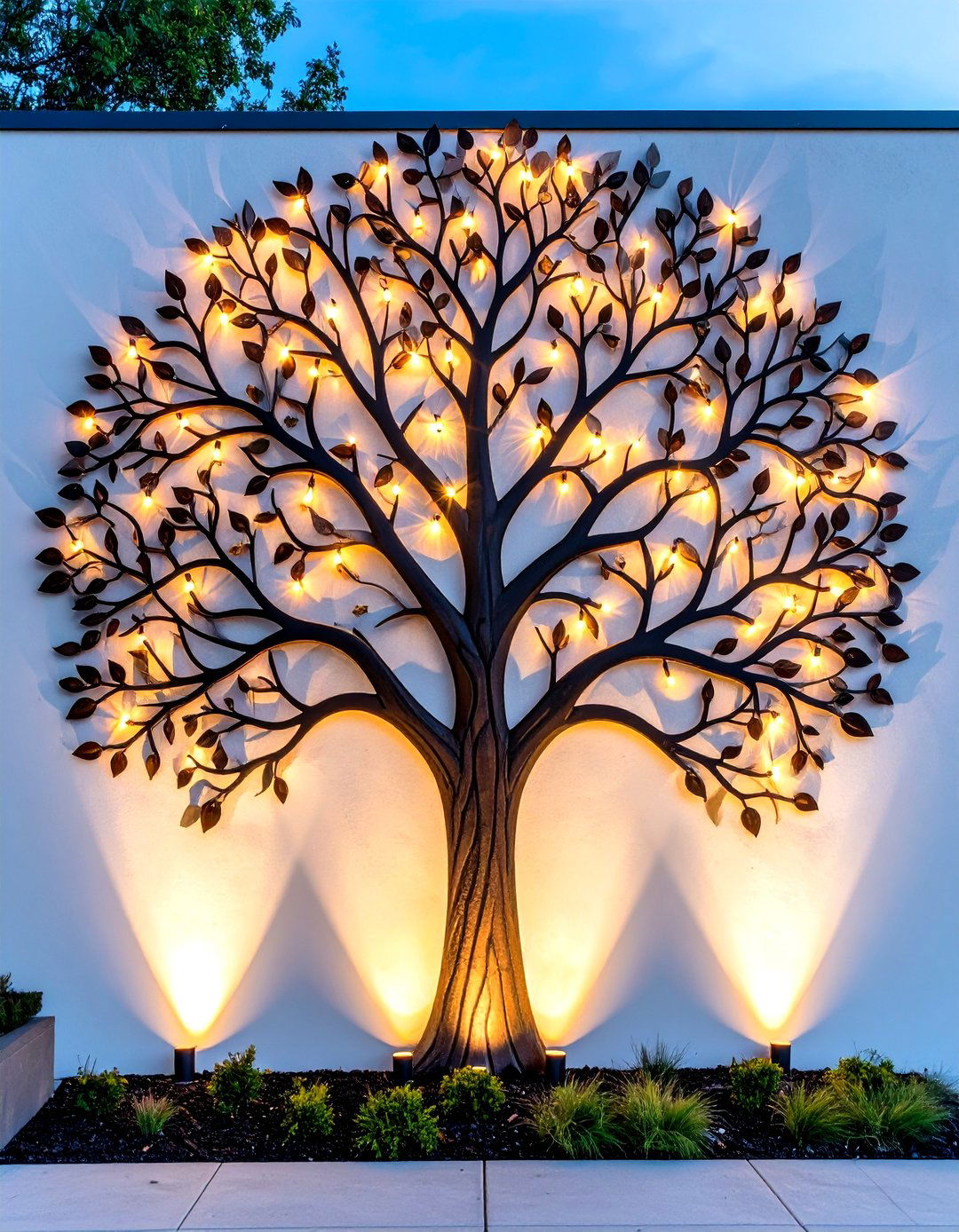



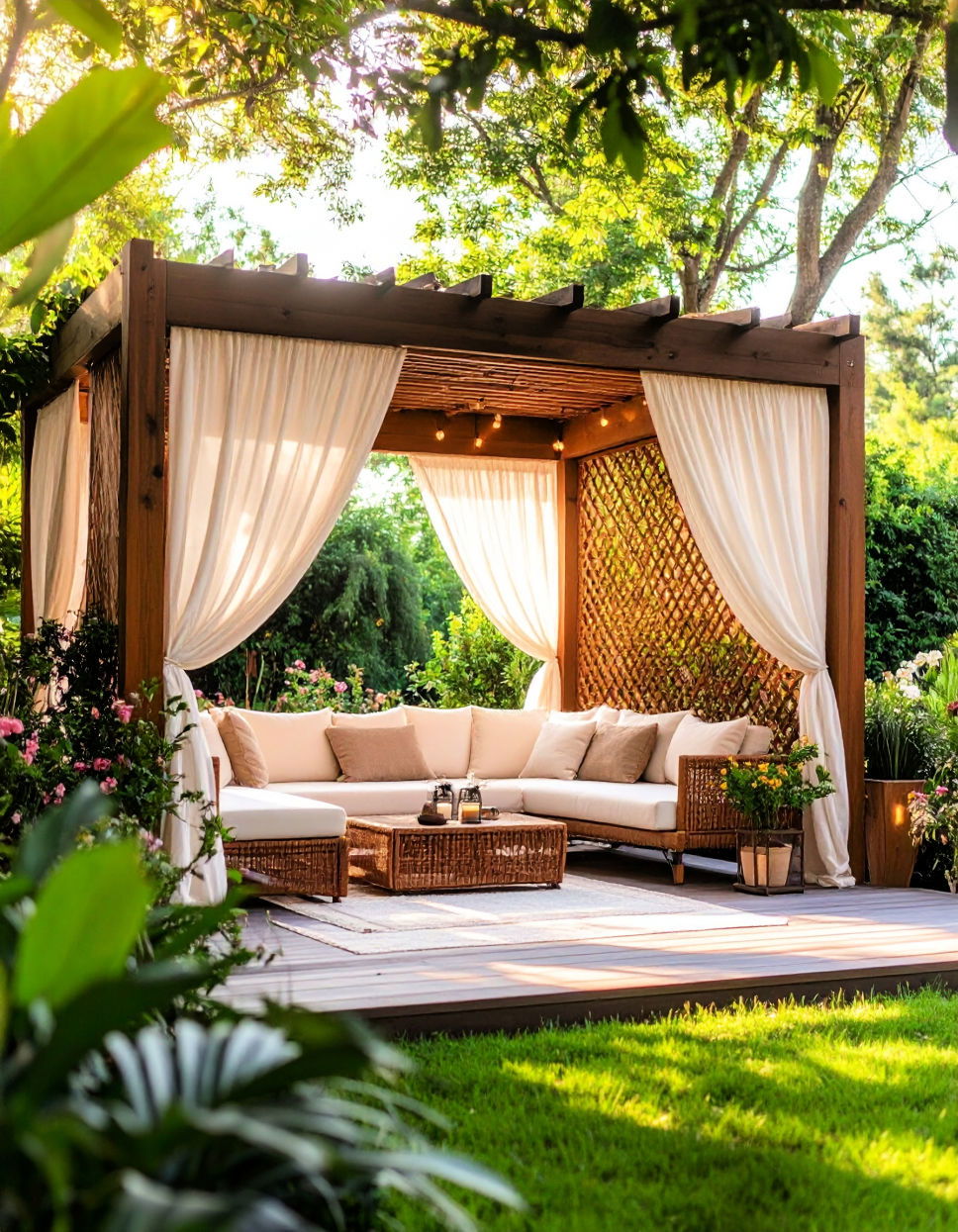
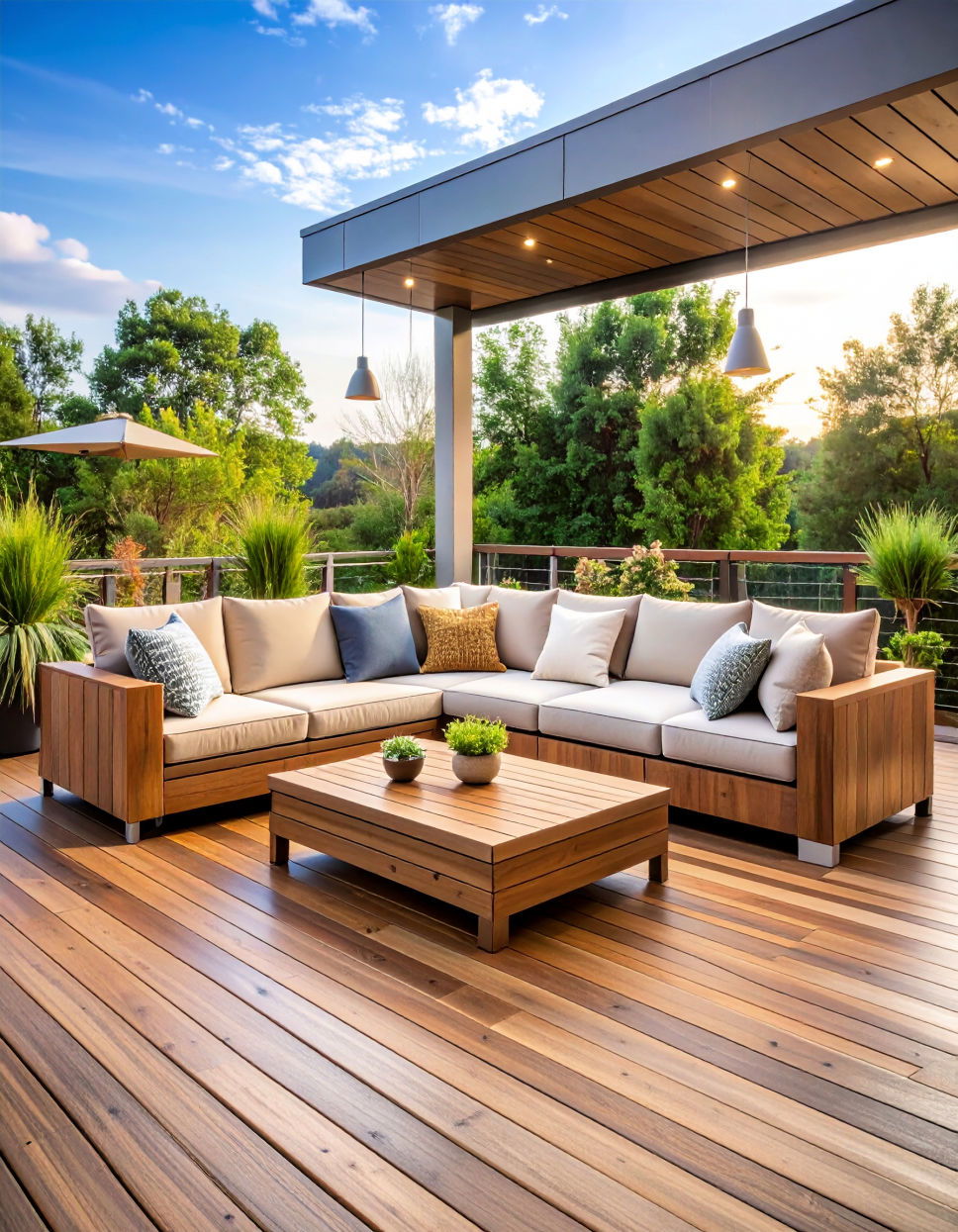
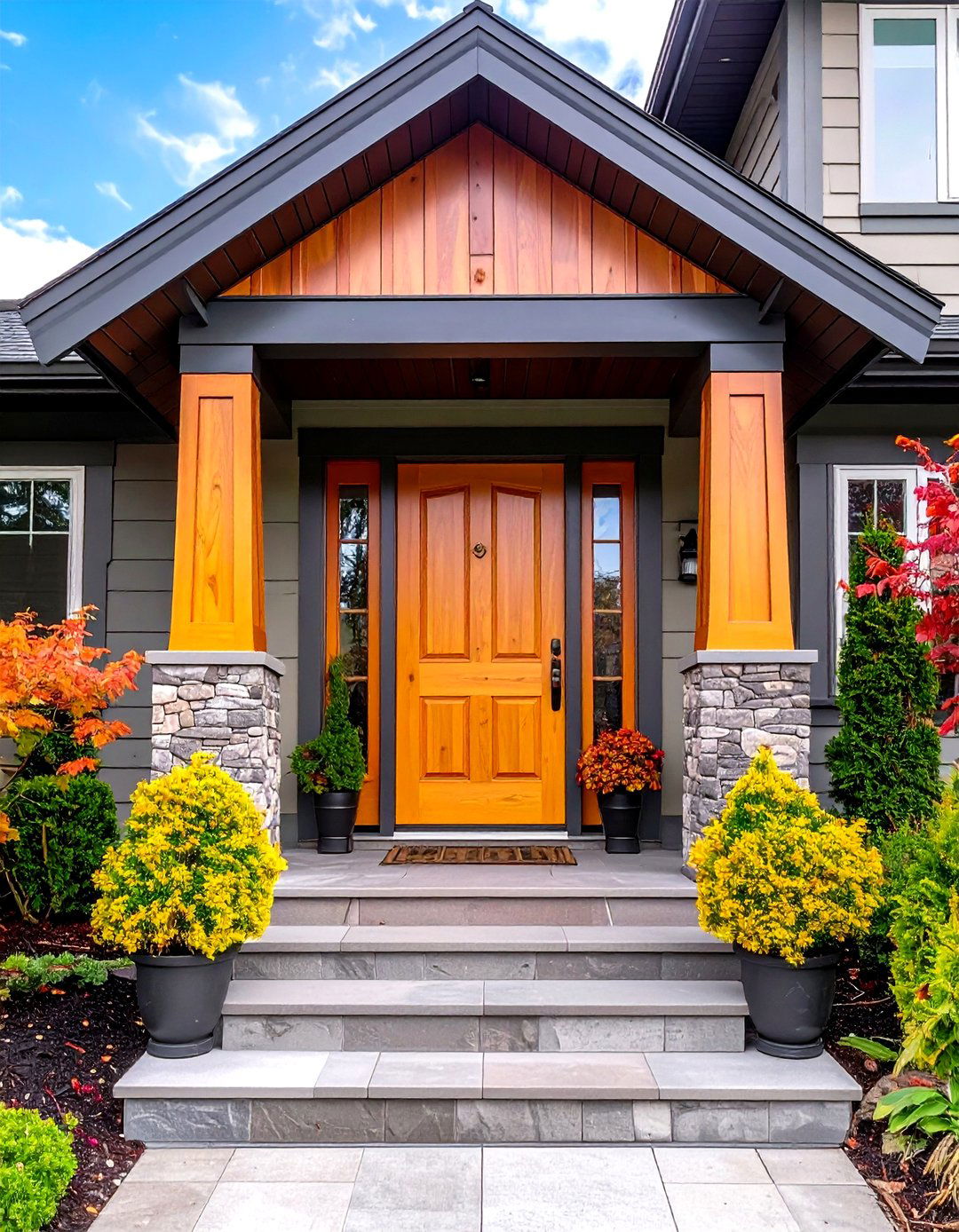
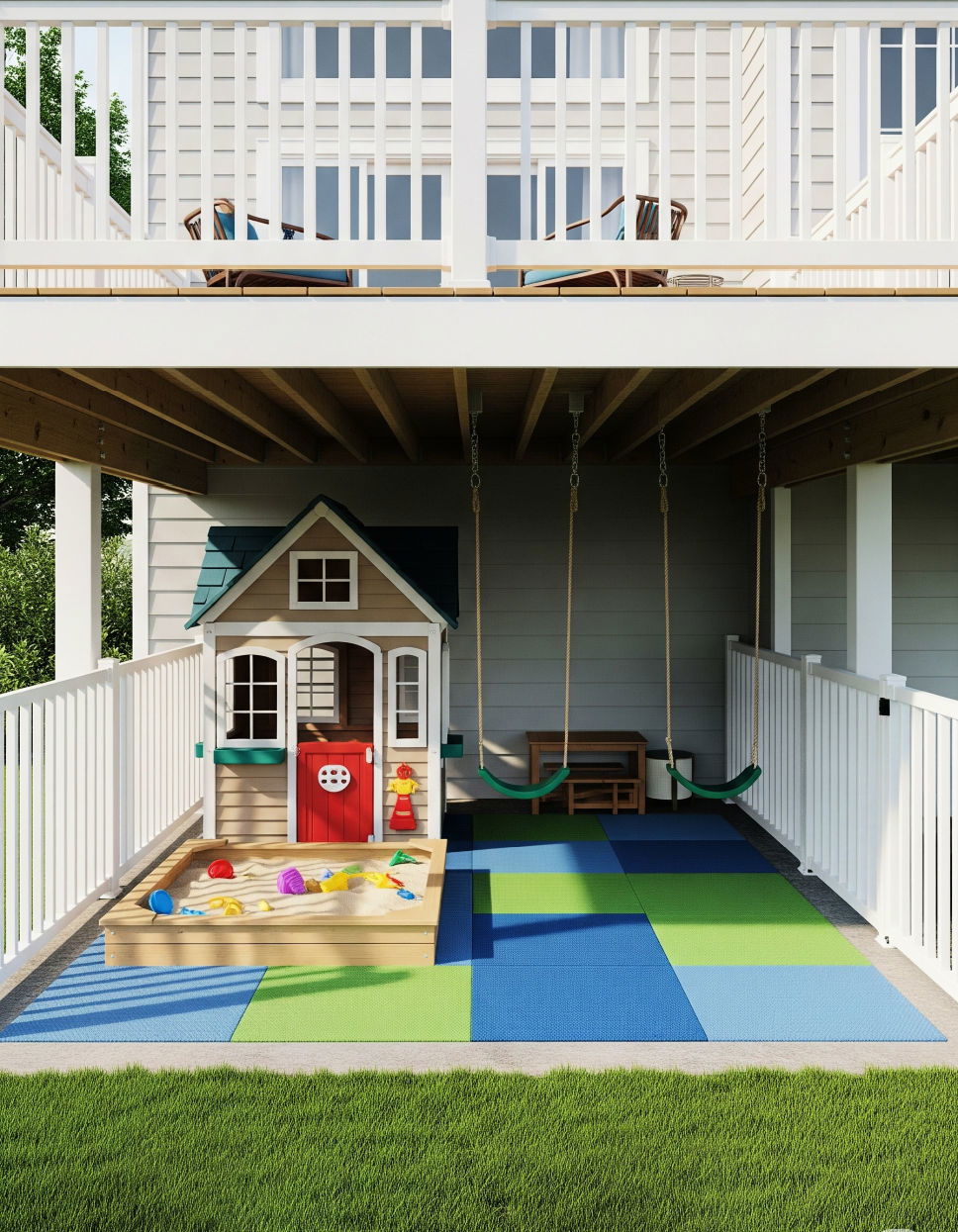
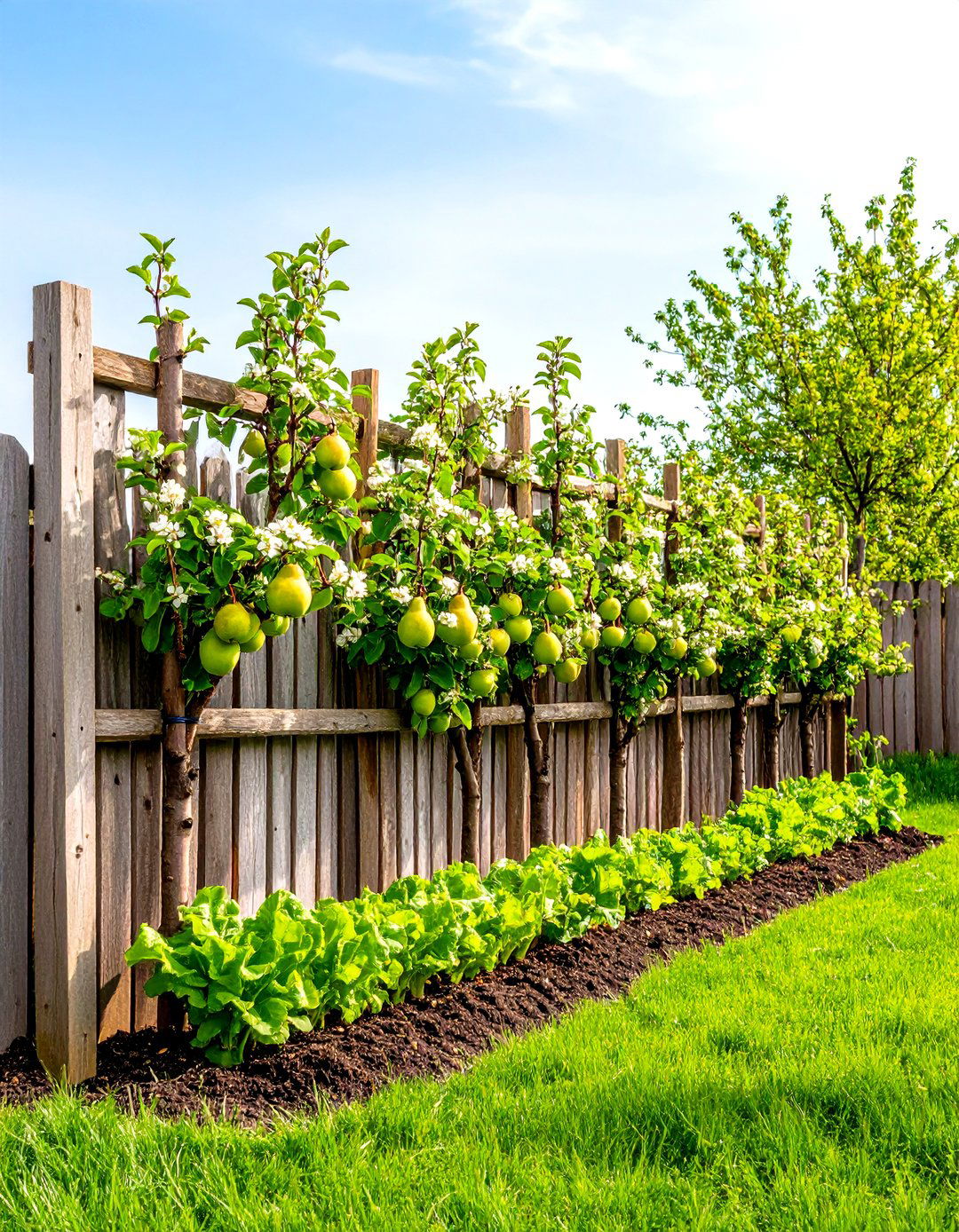
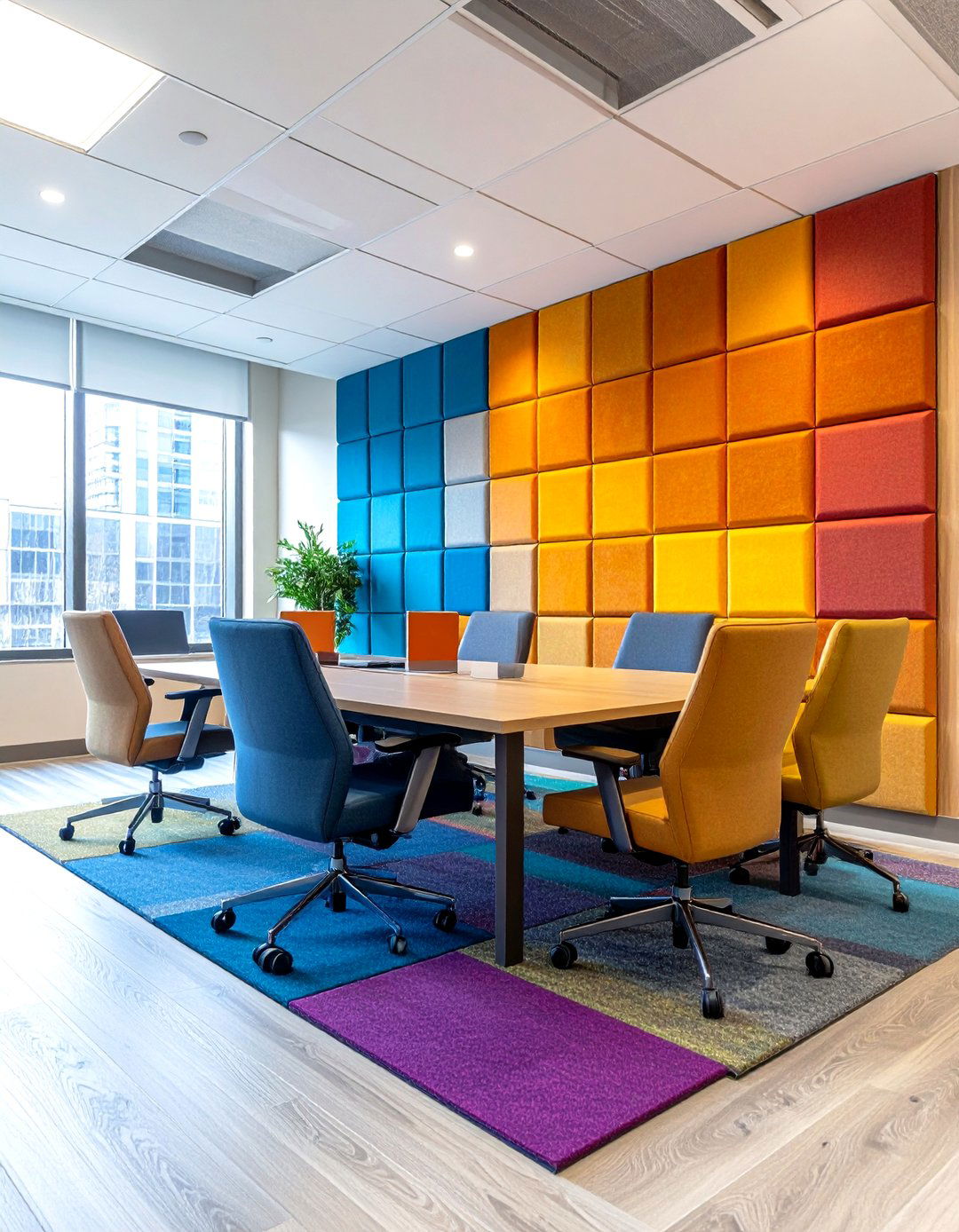
Leave a Reply